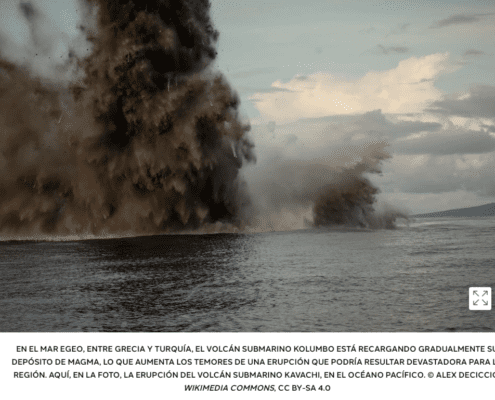 https://volcanofoundation.org/wp-content/uploads/2023/01/Captura-de-pantalla-22-1.png
769
979
Anne Fornier
https://volcanofoundation.org/wp-content/uploads/2021/04/volcano-foundation-1-1.png
Anne Fornier2023-01-15 19:14:112023-01-15 19:43:27A devastating eruption in the Mediterranean?
https://volcanofoundation.org/wp-content/uploads/2023/01/Captura-de-pantalla-22-1.png
769
979
Anne Fornier
https://volcanofoundation.org/wp-content/uploads/2021/04/volcano-foundation-1-1.png
Anne Fornier2023-01-15 19:14:112023-01-15 19:43:27A devastating eruption in the Mediterranean?A volcanic event has an unpredictable behaviour. It is very different from the emergency model of an earthquake with an emergency peak, a response phase and then a recovery phase. Depending on the evolution of the volcanic activity, the crisis can be long and its management from a communication perspective requires a combination of strategies and tools that facilitate the response and promote preparedness, prevention or mitigation measures.
The crisis caused by a volcanic event radically changes the normal conditions of a community, resulting in a significant increase in the demand and need for information from organisations, the media and communities.
Recommendations for reducing the likelihood of rumours and misinformation following the UN recommendations
Prepare a press kit with the help of scientists. It should contain information on the history of the volcano, its activity and eruption pattern, contingency plans, main health risks and relevant measures in case of a volcanic eruption.
Ensuring the quality and reliability of communication:
Prioritise local news agencies, television or radio stations, which are often the most effective in informing the population at risk. The foreign press takes a back seat. – Always answer journalists’ questions. Be accessible. This will prevent the media from seeking information from other sources or making independent assessments. – Make sure that the same information is given to local and foreign media. Remember that local people may have friends or relatives abroad and be in contact with them during the emergency. – Never make “unofficial” comments. – Avoid making spontaneous comments that could be misinterpreted.
Ensure that only the official spokesperson speaks to the media, making sure that the spokesperson: – knows the required information before the interview, so that he/she can prepare a general context for his/her answers. – During the interview, stick to the topic and give simple, short, direct answers that cannot be misinterpreted.
The role of media journalists in a crisis
It is important for the media to take into account the following recommendations:
– Familiarise yourself with the volcano and the potentially affected community(ies).
– Read and understand the information packages provided by the institution or team of scientists.
Ensure information channels :
– Ensure that a reliable working relationship is established with the institution and scientific monitoring team before the crisis occurs or as early as possible during pre-crisis alert states.
– Design effective forms and protocols for information management to ensure consistency of messages.
– Improve the speed and effectiveness of lines of communication.
Ensure the quality of information.
– Discuss with the official emergency address and the style and format of alerts.
– Use a simple and direct style, have graphic material available and ensure that the information reaches all members of the community.
Disseminate information to the public.
– Disseminate frequent articles about the volcano observatory and its work.
– Regularly disseminate information about warning systems, how warnings will be issued in times of crisis and how the public should react.
RELATED POSTS
 https://volcanofoundation.org/wp-content/uploads/2023/01/Captura-de-pantalla-22-1.png
769
979
Anne Fornier
https://volcanofoundation.org/wp-content/uploads/2021/04/volcano-foundation-1-1.png
Anne Fornier2023-01-15 19:14:112023-01-15 19:43:27A devastating eruption in the Mediterranean?
https://volcanofoundation.org/wp-content/uploads/2023/01/Captura-de-pantalla-22-1.png
769
979
Anne Fornier
https://volcanofoundation.org/wp-content/uploads/2021/04/volcano-foundation-1-1.png
Anne Fornier2023-01-15 19:14:112023-01-15 19:43:27A devastating eruption in the Mediterranean?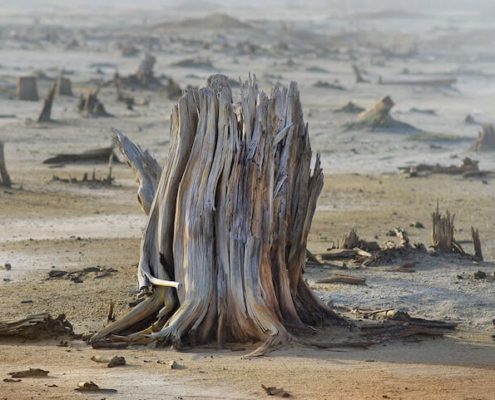 https://volcanofoundation.org/wp-content/uploads/2021/09/consecuencias-de-la-lluvia-acida-arboles-secos-2-1.jpeg
481
600
Anne Fornier
https://volcanofoundation.org/wp-content/uploads/2021/04/volcano-foundation-1-1.png
Anne Fornier2022-08-20 22:38:422022-08-20 22:38:42Risk of Volcano Catastrophe
https://volcanofoundation.org/wp-content/uploads/2021/09/consecuencias-de-la-lluvia-acida-arboles-secos-2-1.jpeg
481
600
Anne Fornier
https://volcanofoundation.org/wp-content/uploads/2021/04/volcano-foundation-1-1.png
Anne Fornier2022-08-20 22:38:422022-08-20 22:38:42Risk of Volcano Catastrophe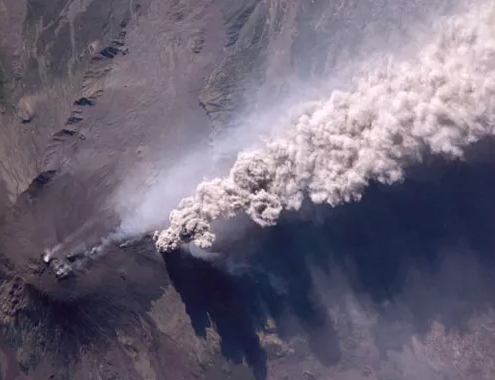 https://volcanofoundation.org/wp-content/uploads/2022/06/Etna.webp
380
514
Anne Fornier
https://volcanofoundation.org/wp-content/uploads/2021/04/volcano-foundation-1-1.png
Anne Fornier2022-06-20 11:44:052022-06-20 11:44:05Radon enrichment in the volcanic plume of Etna
https://volcanofoundation.org/wp-content/uploads/2022/06/Etna.webp
380
514
Anne Fornier
https://volcanofoundation.org/wp-content/uploads/2021/04/volcano-foundation-1-1.png
Anne Fornier2022-06-20 11:44:052022-06-20 11:44:05Radon enrichment in the volcanic plume of Etna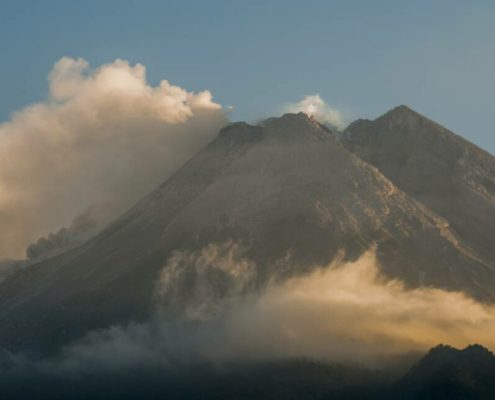
WHAT ARE THE LINKS BETWEEN GLOBAL WARMING AND VOLCANOES
ALL, BIODIVERSITY & CULTURE, RESILIENCE, UNDRR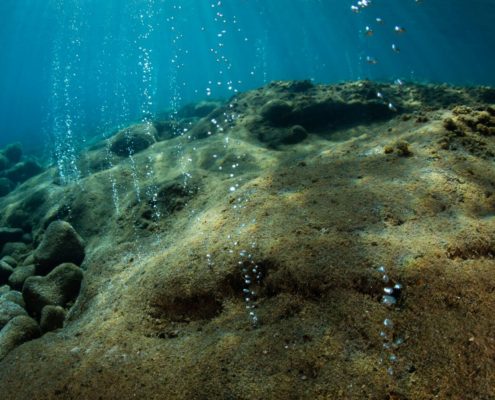
POTENTIALLY DANGEROUS VOLCANO UNDER THE MEDITERRANEAN SEA
ALL, BIODIVERSITY & CULTURE, RESILIENCE, UNDRR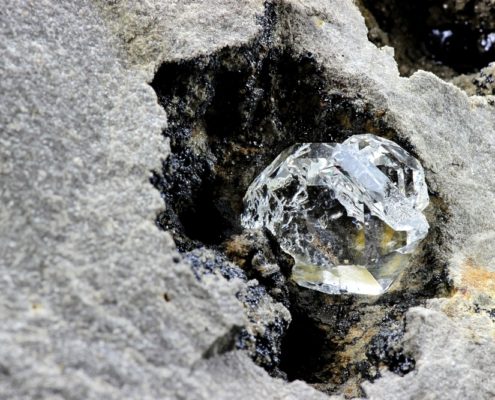 https://volcanofoundation.org/wp-content/uploads/2022/02/diamantes-4-1.jpg
667
1000
Anne Fornier
https://volcanofoundation.org/wp-content/uploads/2021/04/volcano-foundation-1-1.png
Anne Fornier2022-02-05 11:34:112022-02-17 14:13:23DIAMONDS AND VOLCANOES
https://volcanofoundation.org/wp-content/uploads/2022/02/diamantes-4-1.jpg
667
1000
Anne Fornier
https://volcanofoundation.org/wp-content/uploads/2021/04/volcano-foundation-1-1.png
Anne Fornier2022-02-05 11:34:112022-02-17 14:13:23DIAMONDS AND VOLCANOES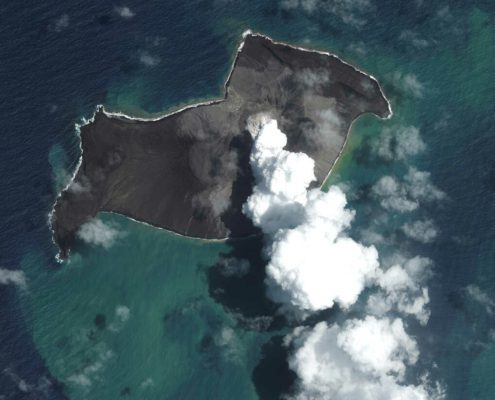
TONGA VOLCANIC ERUPTION AND THE TELECOMMUNICATION SYSTEM
ALL, BIODIVERSITY & CULTURE, RESILIENCE, UNDRR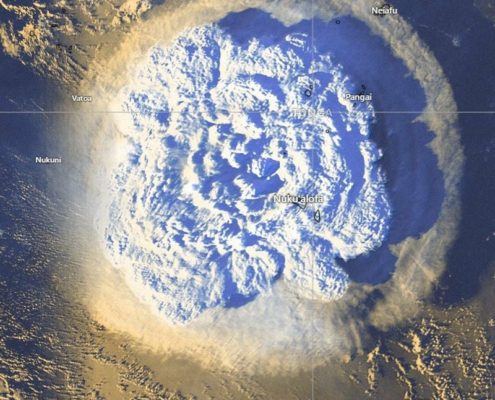 https://volcanofoundation.org/wp-content/uploads/2022/01/hunga-tonga-huga-ha-apai-eruption.jpg
913
800
Anne Fornier
https://volcanofoundation.org/wp-content/uploads/2021/04/volcano-foundation-1-1.png
Anne Fornier2022-01-17 12:54:072022-01-17 19:03:51ERUPTION OF THE HUNGA TONGA-HUNGA HA’APAI VOLCANO
https://volcanofoundation.org/wp-content/uploads/2022/01/hunga-tonga-huga-ha-apai-eruption.jpg
913
800
Anne Fornier
https://volcanofoundation.org/wp-content/uploads/2021/04/volcano-foundation-1-1.png
Anne Fornier2022-01-17 12:54:072022-01-17 19:03:51ERUPTION OF THE HUNGA TONGA-HUNGA HA’APAI VOLCANO https://volcanofoundation.org/wp-content/uploads/2021/09/consecuencias-de-la-lluvia-acida-arboles-secos-2-1.jpeg
481
600
Anne Fornier
https://volcanofoundation.org/wp-content/uploads/2021/04/volcano-foundation-1-1.png
Anne Fornier2022-01-15 11:03:512022-01-15 17:56:51ACID RAIN AND THE IMPACT ON BIODIVERSITY.
https://volcanofoundation.org/wp-content/uploads/2021/09/consecuencias-de-la-lluvia-acida-arboles-secos-2-1.jpeg
481
600
Anne Fornier
https://volcanofoundation.org/wp-content/uploads/2021/04/volcano-foundation-1-1.png
Anne Fornier2022-01-15 11:03:512022-01-15 17:56:51ACID RAIN AND THE IMPACT ON BIODIVERSITY.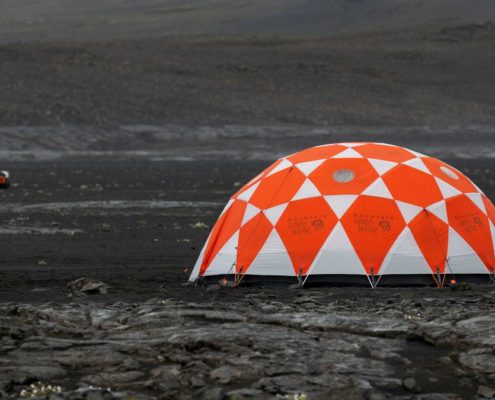 https://volcanofoundation.org/wp-content/uploads/2022/01/nasa_iceland_afp_full_1565770563359-min-1-e1641307123144.jpeg
380
675
Anne Fornier
https://volcanofoundation.org/wp-content/uploads/2021/04/volcano-foundation-1-1.png
Anne Fornier2022-01-04 15:04:362022-01-13 17:20:57NASA TESTS CURIOSITY ROBOTS FOR MARS IN ICELAND
https://volcanofoundation.org/wp-content/uploads/2022/01/nasa_iceland_afp_full_1565770563359-min-1-e1641307123144.jpeg
380
675
Anne Fornier
https://volcanofoundation.org/wp-content/uploads/2021/04/volcano-foundation-1-1.png
Anne Fornier2022-01-04 15:04:362022-01-13 17:20:57NASA TESTS CURIOSITY ROBOTS FOR MARS IN ICELAND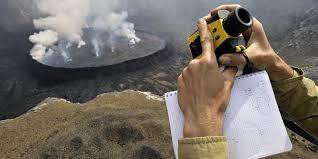 https://volcanofoundation.org/wp-content/uploads/2021/12/téléchargement-min.jpeg
159
318
Anne Fornier
https://volcanofoundation.org/wp-content/uploads/2021/04/volcano-foundation-1-1.png
Anne Fornier2021-12-21 15:05:312022-01-13 17:22:30MACHINE LEARNING AND TECHNOLOGY IN VOLCANOLOGY
https://volcanofoundation.org/wp-content/uploads/2021/12/téléchargement-min.jpeg
159
318
Anne Fornier
https://volcanofoundation.org/wp-content/uploads/2021/04/volcano-foundation-1-1.png
Anne Fornier2021-12-21 15:05:312022-01-13 17:22:30MACHINE LEARNING AND TECHNOLOGY IN VOLCANOLOGY https://volcanofoundation.org/wp-content/uploads/2021/12/Capture-décran-2021-12-21-à-13.30.17-min-min-1.png
1724
2560
Anne Fornier
https://volcanofoundation.org/wp-content/uploads/2021/04/volcano-foundation-1-1.png
Anne Fornier2021-12-21 13:04:322021-12-27 11:42:08ANNE FORNIER PUBLISHED IN REVISTA LOGER (RCLGR)
https://volcanofoundation.org/wp-content/uploads/2021/12/Capture-décran-2021-12-21-à-13.30.17-min-min-1.png
1724
2560
Anne Fornier
https://volcanofoundation.org/wp-content/uploads/2021/04/volcano-foundation-1-1.png
Anne Fornier2021-12-21 13:04:322021-12-27 11:42:08ANNE FORNIER PUBLISHED IN REVISTA LOGER (RCLGR)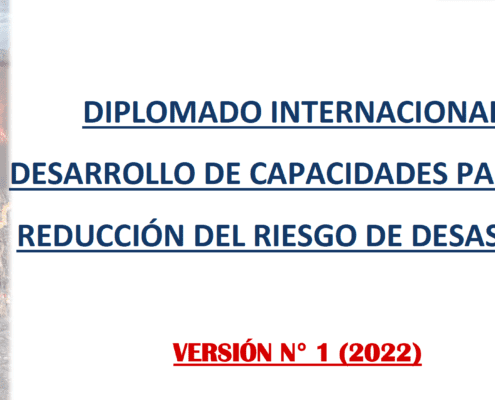
INTERNATIONAL DIPLOMA COURSE CAPACITY DEVELOPMENT FOR DISASTER RISK REDUCTION
ALL, EDUCATION, PROJECTS, RESILIENCE, UNDRR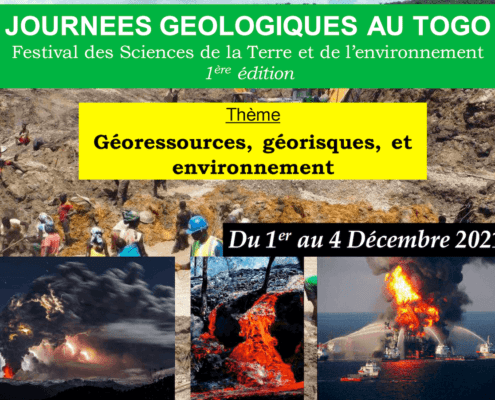
EARTH AND ENVIRONMENTAL SCIENCE DAYS (EESD) IN TOGO
ALL, EDUCATION, EVENTS, PROJECTS, RESILIENCE, UNDRR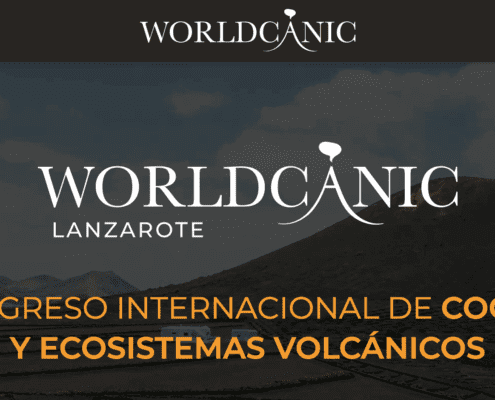
INTERNATIONAL CONGRESS ON VOLCANIC GASTRONOMY AND ECOSYSTEMS
ALL, BIODIVERSITY & CULTURE, ECOTOURISM, EVENTS, PROJECTS, VOLCANO CARE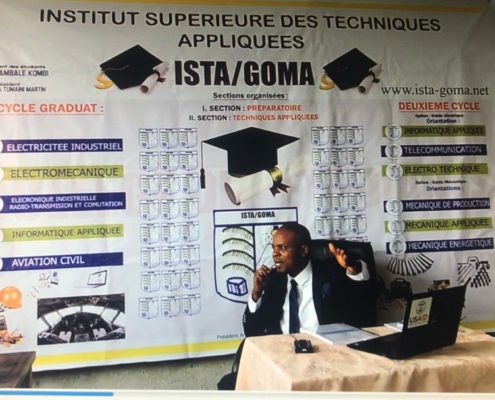 Volcano Foundation
https://volcanofoundation.org/wp-content/uploads/2021/10/volcano-foundation-support-local-scientifics.jpg
608
1080
Anne Fornier
https://volcanofoundation.org/wp-content/uploads/2021/04/volcano-foundation-1-1.png
Anne Fornier2021-10-29 16:26:352021-10-29 16:33:31WE SUPPORT THE TRAINING OF FIELD SCIENTISTS
Volcano Foundation
https://volcanofoundation.org/wp-content/uploads/2021/10/volcano-foundation-support-local-scientifics.jpg
608
1080
Anne Fornier
https://volcanofoundation.org/wp-content/uploads/2021/04/volcano-foundation-1-1.png
Anne Fornier2021-10-29 16:26:352021-10-29 16:33:31WE SUPPORT THE TRAINING OF FIELD SCIENTISTS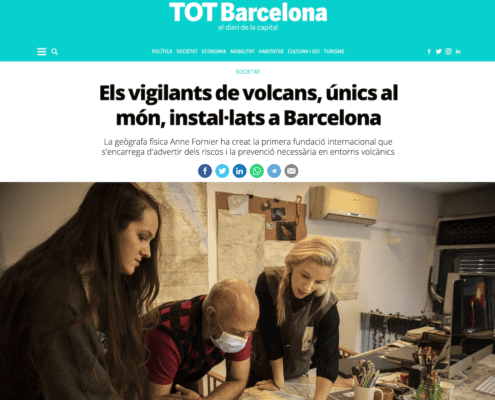 TOT Barcelona
TOT BarcelonaTHE VIGILANTES OF VOLCANOES, UNIQUE IN THE WORLD, INSTALLED IN BARCELONA
ALL, PRESS, RESILIENCE, UNDRR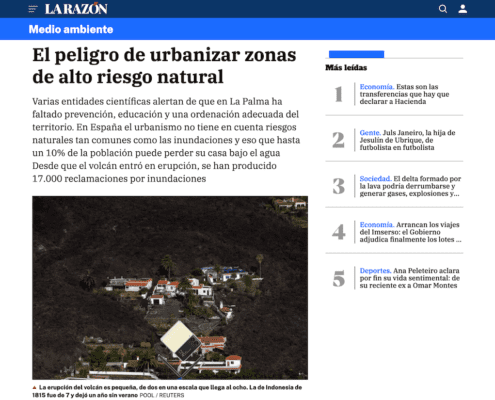 https://volcanofoundation.org/wp-content/uploads/2021/10/peligro-urbanizar-riesgo-natural-la-razon-.png
825
1200
Anne Fornier
https://volcanofoundation.org/wp-content/uploads/2021/04/volcano-foundation-1-1.png
Anne Fornier2021-10-19 12:18:462021-10-19 13:26:49THE DANGER OF URBANISING HIGH-RISK NATURAL AREAS
https://volcanofoundation.org/wp-content/uploads/2021/10/peligro-urbanizar-riesgo-natural-la-razon-.png
825
1200
Anne Fornier
https://volcanofoundation.org/wp-content/uploads/2021/04/volcano-foundation-1-1.png
Anne Fornier2021-10-19 12:18:462021-10-19 13:26:49THE DANGER OF URBANISING HIGH-RISK NATURAL AREAS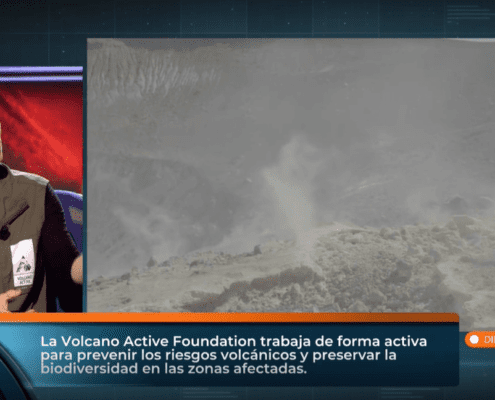 https://volcanofoundation.org/wp-content/uploads/2021/10/Anne-horizonte-cuatro-tv.png
648
1200
Anne Fornier
https://volcanofoundation.org/wp-content/uploads/2021/04/volcano-foundation-1-1.png
Anne Fornier2021-10-08 12:26:192021-10-18 13:08:06THE LACK OF DILIGENCE IN LA PALMA, CANARY ISLANDS
https://volcanofoundation.org/wp-content/uploads/2021/10/Anne-horizonte-cuatro-tv.png
648
1200
Anne Fornier
https://volcanofoundation.org/wp-content/uploads/2021/04/volcano-foundation-1-1.png
Anne Fornier2021-10-08 12:26:192021-10-18 13:08:06THE LACK OF DILIGENCE IN LA PALMA, CANARY ISLANDS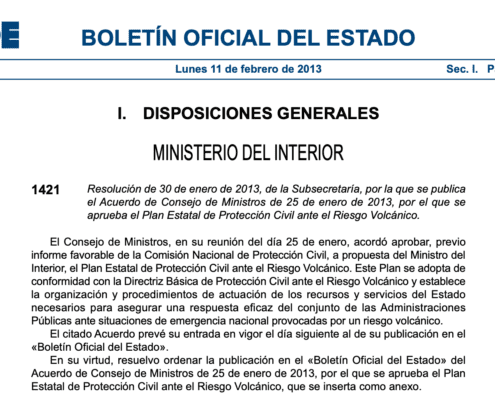 https://volcanofoundation.org/wp-content/uploads/2021/10/boletin-riesgo-volcanico.png
974
1536
Anne Fornier
https://volcanofoundation.org/wp-content/uploads/2021/04/volcano-foundation-1-1.png
Anne Fornier2021-10-07 14:06:592021-10-08 12:27:30OUR QUESTIONS TO THE CONGRESS OF DEPUTIES OF SPAIN
https://volcanofoundation.org/wp-content/uploads/2021/10/boletin-riesgo-volcanico.png
974
1536
Anne Fornier
https://volcanofoundation.org/wp-content/uploads/2021/04/volcano-foundation-1-1.png
Anne Fornier2021-10-07 14:06:592021-10-08 12:27:30OUR QUESTIONS TO THE CONGRESS OF DEPUTIES OF SPAIN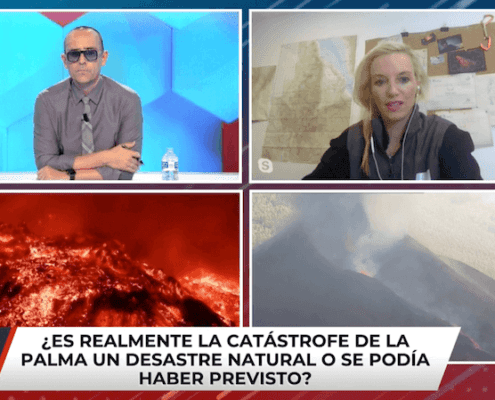
THE LA PALMA CATASTROPHE IS NOT A NATURAL DISASTER, IT IS A NATURAL HAZARD
ALL, PRESS, RESILIENCE, UNDRR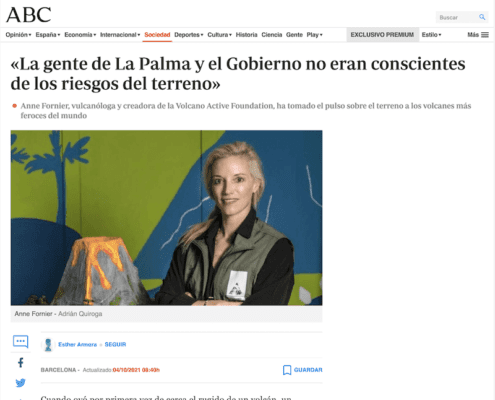 https://volcanofoundation.org/wp-content/uploads/2021/10/palma-gobiernos-abc.png
741
800
Anne Fornier
https://volcanofoundation.org/wp-content/uploads/2021/04/volcano-foundation-1-1.png
Anne Fornier2021-10-05 10:01:472021-10-05 16:46:10VOLCANO FOUNDATION IN ABC.ES
https://volcanofoundation.org/wp-content/uploads/2021/10/palma-gobiernos-abc.png
741
800
Anne Fornier
https://volcanofoundation.org/wp-content/uploads/2021/04/volcano-foundation-1-1.png
Anne Fornier2021-10-05 10:01:472021-10-05 16:46:10VOLCANO FOUNDATION IN ABC.ES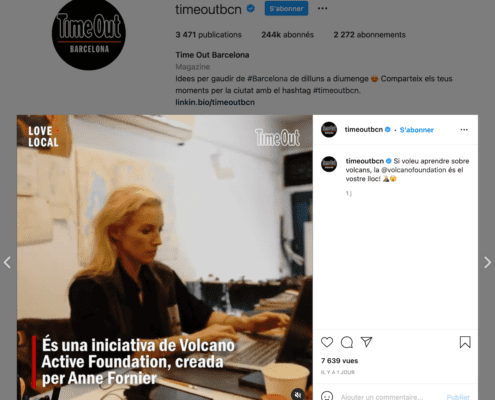 https://volcanofoundation.org/wp-content/uploads/2021/10/volcano-foundation-timeout.png
1200
1402
Anne Fornier
https://volcanofoundation.org/wp-content/uploads/2021/04/volcano-foundation-1-1.png
Anne Fornier2021-10-03 11:04:462021-10-05 16:48:06VOLCANO FOUNDATION IN TIMEOUT BCN
https://volcanofoundation.org/wp-content/uploads/2021/10/volcano-foundation-timeout.png
1200
1402
Anne Fornier
https://volcanofoundation.org/wp-content/uploads/2021/04/volcano-foundation-1-1.png
Anne Fornier2021-10-03 11:04:462021-10-05 16:48:06VOLCANO FOUNDATION IN TIMEOUT BCN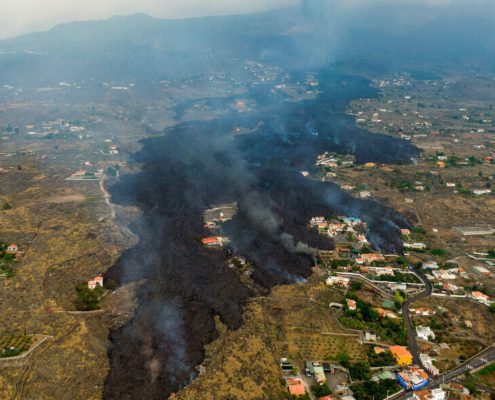 https://volcanofoundation.org/wp-content/uploads/2021/09/la-palma-disaster.jpeg
591
1050
Anne Fornier
https://volcanofoundation.org/wp-content/uploads/2021/04/volcano-foundation-1-1.png
Anne Fornier2021-09-23 08:49:152021-10-05 16:48:16LA PALMA ERUPTION DESTROYING HOUSES, DISPLACING 6 500 PEOPLE
https://volcanofoundation.org/wp-content/uploads/2021/09/la-palma-disaster.jpeg
591
1050
Anne Fornier
https://volcanofoundation.org/wp-content/uploads/2021/04/volcano-foundation-1-1.png
Anne Fornier2021-09-23 08:49:152021-10-05 16:48:16LA PALMA ERUPTION DESTROYING HOUSES, DISPLACING 6 500 PEOPLE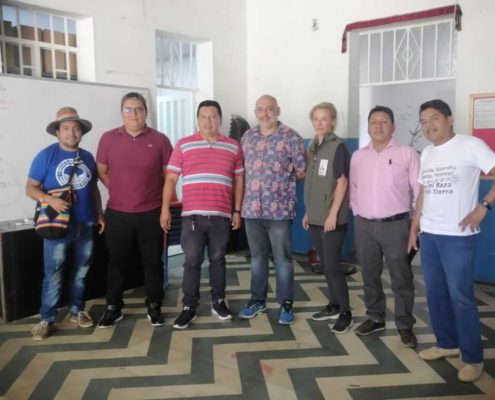 https://volcanofoundation.org/wp-content/uploads/2021/09/IMG-20210903-WA0025.jpg
960
1280
Anne Fornier
https://volcanofoundation.org/wp-content/uploads/2021/04/volcano-foundation-1-1.png
Anne Fornier2021-09-13 14:00:522021-10-05 16:48:40PARTNERSHIP WITH CRIHU ASOCIACIÓN
https://volcanofoundation.org/wp-content/uploads/2021/09/IMG-20210903-WA0025.jpg
960
1280
Anne Fornier
https://volcanofoundation.org/wp-content/uploads/2021/04/volcano-foundation-1-1.png
Anne Fornier2021-09-13 14:00:522021-10-05 16:48:40PARTNERSHIP WITH CRIHU ASOCIACIÓN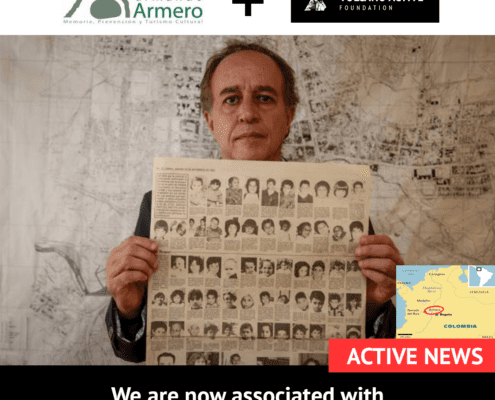 Volcano Foundation
https://volcanofoundation.org/wp-content/uploads/2021/09/armando-aremero-association.png
1200
1202
Anne Fornier
https://volcanofoundation.org/wp-content/uploads/2021/04/volcano-foundation-1-1.png
Anne Fornier2021-09-06 15:49:202021-10-05 16:48:52WE ARE ASSOCIATED WITH THE ARMANDO ARMERO FOUNDATION
Volcano Foundation
https://volcanofoundation.org/wp-content/uploads/2021/09/armando-aremero-association.png
1200
1202
Anne Fornier
https://volcanofoundation.org/wp-content/uploads/2021/04/volcano-foundation-1-1.png
Anne Fornier2021-09-06 15:49:202021-10-05 16:48:52WE ARE ASSOCIATED WITH THE ARMANDO ARMERO FOUNDATION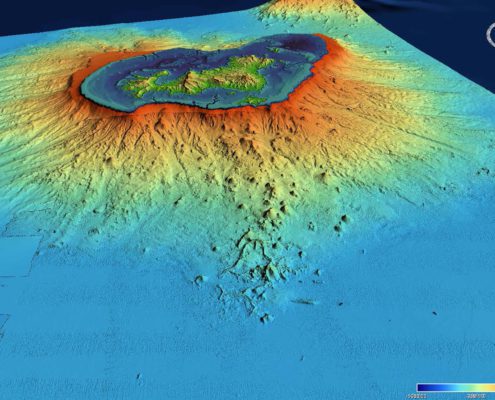 https://volcanofoundation.org/wp-content/uploads/2021/07/actualite-volcan-seismes-mayotte-surveillance-revosima-001.jpeg
1296
1920
Anne Fornier
https://volcanofoundation.org/wp-content/uploads/2021/04/volcano-foundation-1-1.png
Anne Fornier2021-08-23 09:39:582021-10-05 16:49:10A NEW VOLCANO IS EMERGING IN MAYOTTE SINCE MAY 2019
https://volcanofoundation.org/wp-content/uploads/2021/07/actualite-volcan-seismes-mayotte-surveillance-revosima-001.jpeg
1296
1920
Anne Fornier
https://volcanofoundation.org/wp-content/uploads/2021/04/volcano-foundation-1-1.png
Anne Fornier2021-08-23 09:39:582021-10-05 16:49:10A NEW VOLCANO IS EMERGING IN MAYOTTE SINCE MAY 2019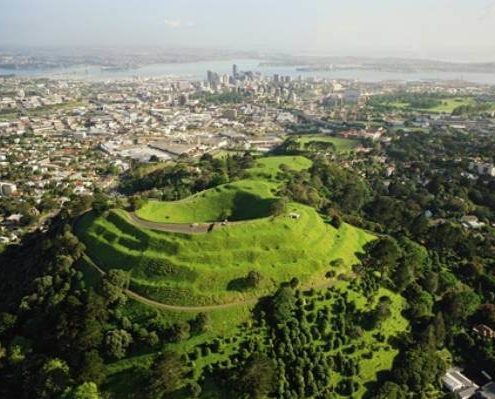 https://volcanofoundation.org/wp-content/uploads/2021/07/1560921535247.jpeg
399
710
Anne Fornier
https://volcanofoundation.org/wp-content/uploads/2021/04/volcano-foundation-1-1.png
Anne Fornier2021-08-09 08:00:322021-10-05 16:49:52TOP 5 OF THE CITIES THAT ARE BUILT ON VOLCANOES.
https://volcanofoundation.org/wp-content/uploads/2021/07/1560921535247.jpeg
399
710
Anne Fornier
https://volcanofoundation.org/wp-content/uploads/2021/04/volcano-foundation-1-1.png
Anne Fornier2021-08-09 08:00:322021-10-05 16:49:52TOP 5 OF THE CITIES THAT ARE BUILT ON VOLCANOES.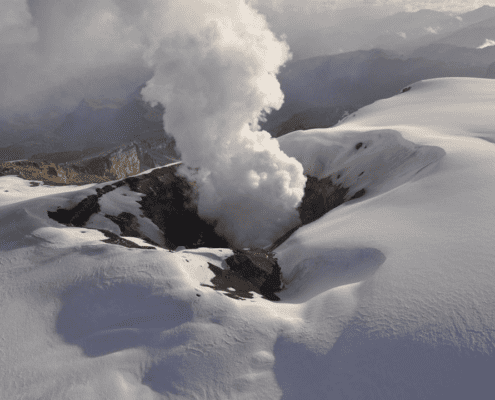 https://volcanofoundation.org/wp-content/uploads/2021/07/fotonoticia_20120701085944_1200.png
720
1200
Anne Fornier
https://volcanofoundation.org/wp-content/uploads/2021/04/volcano-foundation-1-1.png
Anne Fornier2021-08-02 08:00:132021-10-05 16:49:58THREE RECENT DISASTERS THAT COULD HAVE BEEN AVOIDED
https://volcanofoundation.org/wp-content/uploads/2021/07/fotonoticia_20120701085944_1200.png
720
1200
Anne Fornier
https://volcanofoundation.org/wp-content/uploads/2021/04/volcano-foundation-1-1.png
Anne Fornier2021-08-02 08:00:132021-10-05 16:49:58THREE RECENT DISASTERS THAT COULD HAVE BEEN AVOIDED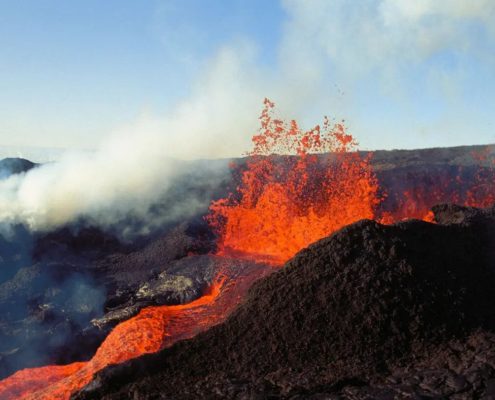 https://volcanofoundation.org/wp-content/uploads/2021/07/Mauna-Loa.jpg-min.jpg
811
1200
Anne Fornier
https://volcanofoundation.org/wp-content/uploads/2021/04/volcano-foundation-1-1.png
Anne Fornier2021-07-27 10:00:012021-10-05 16:50:08THE TWO LARGEST VOLCANIC COMPLEXES IN THE WORLD.
https://volcanofoundation.org/wp-content/uploads/2021/07/Mauna-Loa.jpg-min.jpg
811
1200
Anne Fornier
https://volcanofoundation.org/wp-content/uploads/2021/04/volcano-foundation-1-1.png
Anne Fornier2021-07-27 10:00:012021-10-05 16:50:08THE TWO LARGEST VOLCANIC COMPLEXES IN THE WORLD.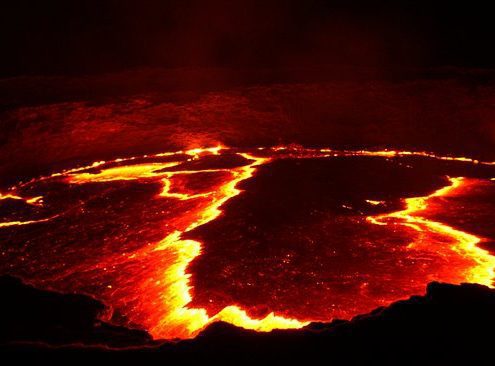 https://volcanofoundation.org/wp-content/uploads/2021/06/erta-ale-min.jpeg
366
550
Anne Fornier
https://volcanofoundation.org/wp-content/uploads/2021/04/volcano-foundation-1-1.png
Anne Fornier2021-07-19 12:45:242021-10-05 19:42:12THE EAST AFRICAN RIFT AND HIS LITHOSPHERIC-SCALE TEAR
https://volcanofoundation.org/wp-content/uploads/2021/06/erta-ale-min.jpeg
366
550
Anne Fornier
https://volcanofoundation.org/wp-content/uploads/2021/04/volcano-foundation-1-1.png
Anne Fornier2021-07-19 12:45:242021-10-05 19:42:12THE EAST AFRICAN RIFT AND HIS LITHOSPHERIC-SCALE TEAR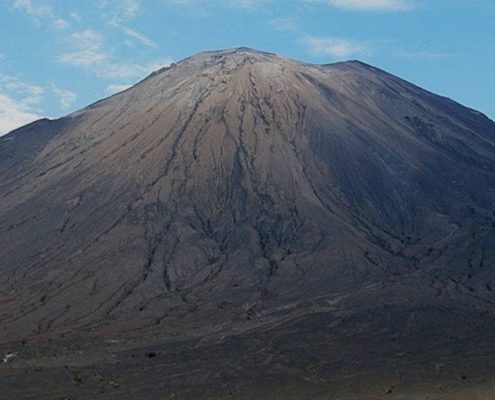 https://volcanofoundation.org/wp-content/uploads/2021/06/4-days-mount-ol-doinyo-lengai-banner-min.jpeg
520
1920
Anne Fornier
https://volcanofoundation.org/wp-content/uploads/2021/04/volcano-foundation-1-1.png
Anne Fornier2021-07-14 10:26:512021-10-05 19:42:26OL DOINYO LENGAI VOLCANO AND THE WHITE LAVA
https://volcanofoundation.org/wp-content/uploads/2021/06/4-days-mount-ol-doinyo-lengai-banner-min.jpeg
520
1920
Anne Fornier
https://volcanofoundation.org/wp-content/uploads/2021/04/volcano-foundation-1-1.png
Anne Fornier2021-07-14 10:26:512021-10-05 19:42:26OL DOINYO LENGAI VOLCANO AND THE WHITE LAVA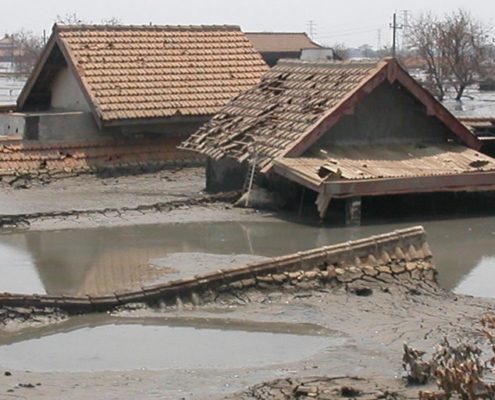 https://volcanofoundation.org/wp-content/uploads/2021/06/Home_sunk_by_mud_flow.jpg
512
1580
Anne Fornier
https://volcanofoundation.org/wp-content/uploads/2021/04/volcano-foundation-1-1.png
Anne Fornier2021-07-12 10:50:042021-10-05 19:42:38A “DRILLING ACCIDENT” TO THE BIRTH OF A MUD VOLCANO
https://volcanofoundation.org/wp-content/uploads/2021/06/Home_sunk_by_mud_flow.jpg
512
1580
Anne Fornier
https://volcanofoundation.org/wp-content/uploads/2021/04/volcano-foundation-1-1.png
Anne Fornier2021-07-12 10:50:042021-10-05 19:42:38A “DRILLING ACCIDENT” TO THE BIRTH OF A MUD VOLCANO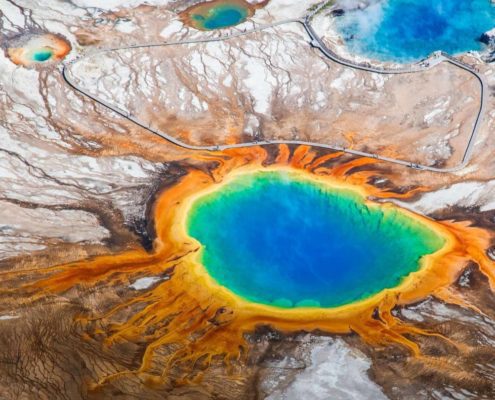 https://volcanofoundation.org/wp-content/uploads/2021/06/best-of-yellowstone-colorful-hot-spring-2-1440x810-min.jpeg
810
1440
Anne Fornier
https://volcanofoundation.org/wp-content/uploads/2021/04/volcano-foundation-1-1.png
Anne Fornier2021-06-30 14:30:212021-10-05 19:42:54WHY ARE THE WARM WATERS OF YELLOWSTONE PARK SO COLORFUL?
https://volcanofoundation.org/wp-content/uploads/2021/06/best-of-yellowstone-colorful-hot-spring-2-1440x810-min.jpeg
810
1440
Anne Fornier
https://volcanofoundation.org/wp-content/uploads/2021/04/volcano-foundation-1-1.png
Anne Fornier2021-06-30 14:30:212021-10-05 19:42:54WHY ARE THE WARM WATERS OF YELLOWSTONE PARK SO COLORFUL?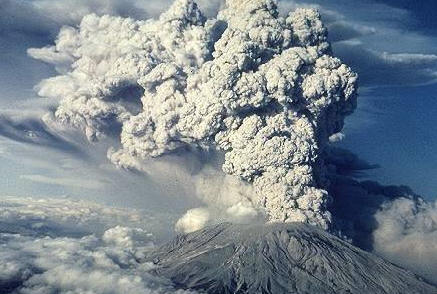 https://volcanofoundation.org/wp-content/uploads/2021/06/volcanpelean-min.jpeg
294
437
Anne Fornier
https://volcanofoundation.org/wp-content/uploads/2021/04/volcano-foundation-1-1.png
Anne Fornier2021-06-30 08:13:182021-10-05 19:43:04THE HISTORY OF MOUNT PELÉE ON THE ISLAND OF MARTINIQUE
https://volcanofoundation.org/wp-content/uploads/2021/06/volcanpelean-min.jpeg
294
437
Anne Fornier
https://volcanofoundation.org/wp-content/uploads/2021/04/volcano-foundation-1-1.png
Anne Fornier2021-06-30 08:13:182021-10-05 19:43:04THE HISTORY OF MOUNT PELÉE ON THE ISLAND OF MARTINIQUE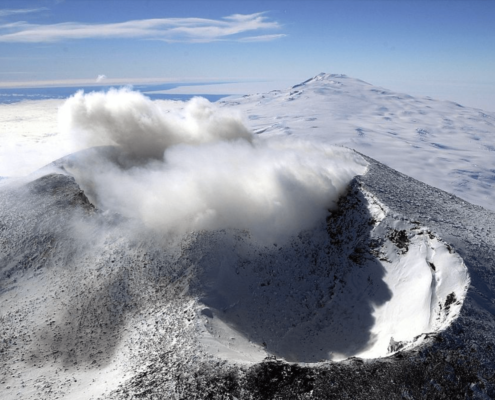 https://volcanofoundation.org/wp-content/uploads/2021/06/Erebus-2-summit-craters.png
1598
2448
Anne Fornier
https://volcanofoundation.org/wp-content/uploads/2021/04/volcano-foundation-1-1.png
Anne Fornier2021-06-29 09:14:362021-10-05 19:43:11WORLD´S LARGEST VOLCANIC REGION DISCOVERED IN ANTARCTICA
https://volcanofoundation.org/wp-content/uploads/2021/06/Erebus-2-summit-craters.png
1598
2448
Anne Fornier
https://volcanofoundation.org/wp-content/uploads/2021/04/volcano-foundation-1-1.png
Anne Fornier2021-06-29 09:14:362021-10-05 19:43:11WORLD´S LARGEST VOLCANIC REGION DISCOVERED IN ANTARCTICA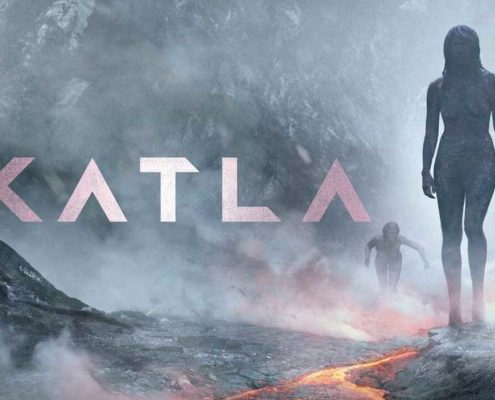 Netflix
https://volcanofoundation.org/wp-content/uploads/2021/06/katla-netflix.jpg
563
1000
Anne Fornier
https://volcanofoundation.org/wp-content/uploads/2021/04/volcano-foundation-1-1.png
Anne Fornier2021-06-28 15:25:042021-10-05 19:43:17FROM THE FICTION TO THE REALITY WITH THE KATLA SERIE
Netflix
https://volcanofoundation.org/wp-content/uploads/2021/06/katla-netflix.jpg
563
1000
Anne Fornier
https://volcanofoundation.org/wp-content/uploads/2021/04/volcano-foundation-1-1.png
Anne Fornier2021-06-28 15:25:042021-10-05 19:43:17FROM THE FICTION TO THE REALITY WITH THE KATLA SERIE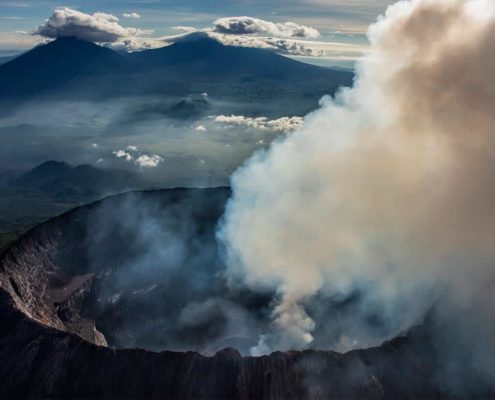 https://volcanofoundation.org/wp-content/uploads/2021/06/Download-4-1.jpeg
828
1440
Anne Fornier
https://volcanofoundation.org/wp-content/uploads/2021/04/volcano-foundation-1-1.png
Anne Fornier2021-06-25 09:45:532021-10-05 19:43:24BIOMONITORING SURVEY AT VIRUNGA VOLCANIC PROVINCE
https://volcanofoundation.org/wp-content/uploads/2021/06/Download-4-1.jpeg
828
1440
Anne Fornier
https://volcanofoundation.org/wp-content/uploads/2021/04/volcano-foundation-1-1.png
Anne Fornier2021-06-25 09:45:532021-10-05 19:43:24BIOMONITORING SURVEY AT VIRUNGA VOLCANIC PROVINCE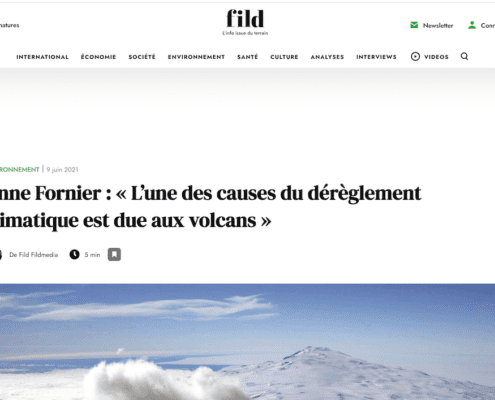 https://volcanofoundation.org/wp-content/uploads/2021/06/fildmedia-volcano-ecology.png
707
1200
Anne Fornier
https://volcanofoundation.org/wp-content/uploads/2021/04/volcano-foundation-1-1.png
Anne Fornier2021-06-09 11:48:462021-10-05 19:43:44ONE OF THE CAUSES OF CLIMATE CHANGE IS DUE TO VOLCANOES
https://volcanofoundation.org/wp-content/uploads/2021/06/fildmedia-volcano-ecology.png
707
1200
Anne Fornier
https://volcanofoundation.org/wp-content/uploads/2021/04/volcano-foundation-1-1.png
Anne Fornier2021-06-09 11:48:462021-10-05 19:43:44ONE OF THE CAUSES OF CLIMATE CHANGE IS DUE TO VOLCANOES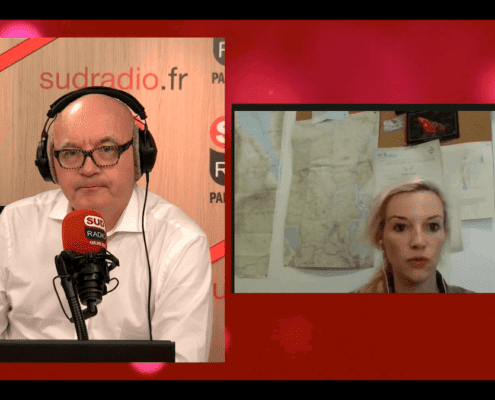 https://volcanofoundation.org/wp-content/uploads/2021/06/volcano-foundation-sud-radio.png
675
1080
Anne Fornier
https://volcanofoundation.org/wp-content/uploads/2021/04/volcano-foundation-1-1.png
Anne Fornier2021-06-05 10:49:482021-10-05 16:53:52INTERVIEW ABOUT GOMA SITUATION “WHAT HAPPENED IN NYIRAGONGO”
https://volcanofoundation.org/wp-content/uploads/2021/06/volcano-foundation-sud-radio.png
675
1080
Anne Fornier
https://volcanofoundation.org/wp-content/uploads/2021/04/volcano-foundation-1-1.png
Anne Fornier2021-06-05 10:49:482021-10-05 16:53:52INTERVIEW ABOUT GOMA SITUATION “WHAT HAPPENED IN NYIRAGONGO”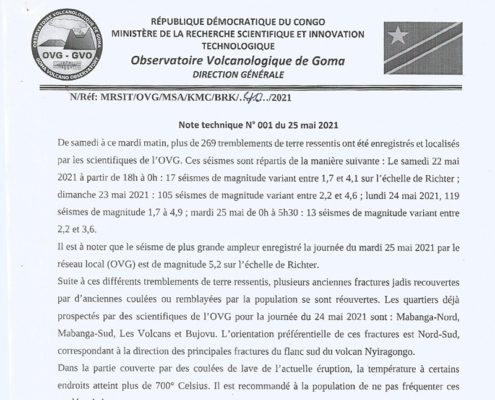 https://volcanofoundation.org/wp-content/uploads/2021/06/Nyiragongo-goma-GVO-technicalnote.jpg
707
800
Anne Fornier
https://volcanofoundation.org/wp-content/uploads/2021/04/volcano-foundation-1-1.png
Anne Fornier2021-06-02 08:42:292021-09-27 16:36:20TECHNICAL NOTE ABOUT NYIRAGONGO VOLCANO IN GOMA
https://volcanofoundation.org/wp-content/uploads/2021/06/Nyiragongo-goma-GVO-technicalnote.jpg
707
800
Anne Fornier
https://volcanofoundation.org/wp-content/uploads/2021/04/volcano-foundation-1-1.png
Anne Fornier2021-06-02 08:42:292021-09-27 16:36:20TECHNICAL NOTE ABOUT NYIRAGONGO VOLCANO IN GOMA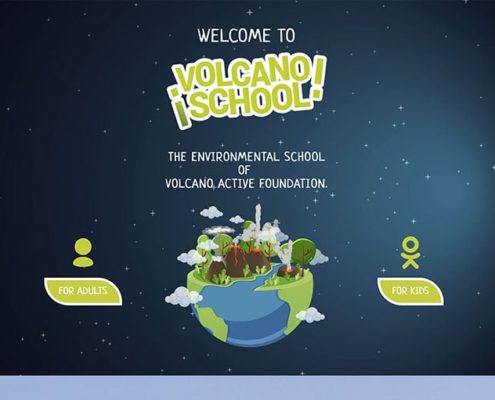 https://volcanofoundation.org/wp-content/uploads/2021/05/Volcano-School-newweb-01.jpg
511
750
Anne Fornier
https://volcanofoundation.org/wp-content/uploads/2021/04/volcano-foundation-1-1.png
Anne Fornier2021-05-22 10:43:562021-09-27 16:36:31WE LAUNCH VOLCANO SCHOOL: AN EDUCATIVE PLATFORM
https://volcanofoundation.org/wp-content/uploads/2021/05/Volcano-School-newweb-01.jpg
511
750
Anne Fornier
https://volcanofoundation.org/wp-content/uploads/2021/04/volcano-foundation-1-1.png
Anne Fornier2021-05-22 10:43:562021-09-27 16:36:31WE LAUNCH VOLCANO SCHOOL: AN EDUCATIVE PLATFORM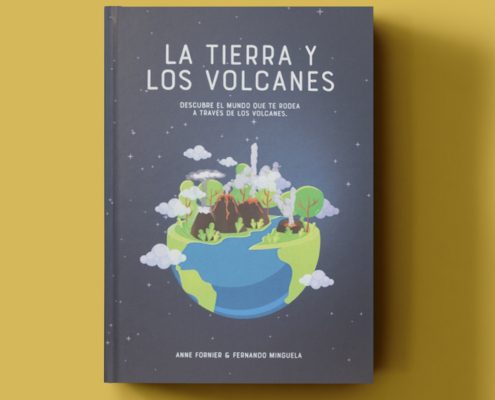 https://volcanofoundation.org/wp-content/uploads/2021/05/Volcano_Libro_Esp.jpg
1080
1080
Anne Fornier
https://volcanofoundation.org/wp-content/uploads/2021/04/volcano-foundation-1-1.png
Anne Fornier2021-05-21 15:11:312021-10-05 19:44:51SANT JORDI’S DAY: LA TIERRA Y LOS VOLCANES
https://volcanofoundation.org/wp-content/uploads/2021/05/Volcano_Libro_Esp.jpg
1080
1080
Anne Fornier
https://volcanofoundation.org/wp-content/uploads/2021/04/volcano-foundation-1-1.png
Anne Fornier2021-05-21 15:11:312021-10-05 19:44:51SANT JORDI’S DAY: LA TIERRA Y LOS VOLCANES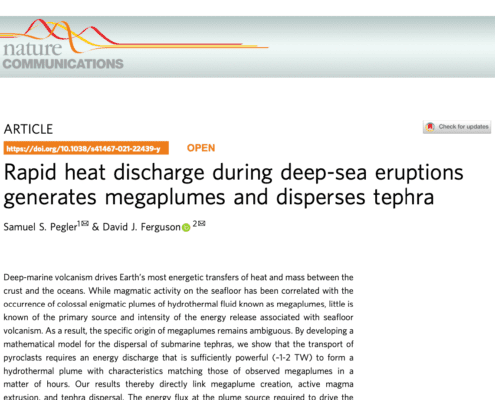 https://volcanofoundation.org/wp-content/uploads/2021/05/deep-sea-article.png
922
1312
Anne Fornier
https://volcanofoundation.org/wp-content/uploads/2021/04/volcano-foundation-1-1.png
Anne Fornier2021-05-20 11:51:232021-09-27 16:37:13THE NEW DISCOVERY ON UNDERWATER ERUPTIONS
https://volcanofoundation.org/wp-content/uploads/2021/05/deep-sea-article.png
922
1312
Anne Fornier
https://volcanofoundation.org/wp-content/uploads/2021/04/volcano-foundation-1-1.png
Anne Fornier2021-05-20 11:51:232021-09-27 16:37:13THE NEW DISCOVERY ON UNDERWATER ERUPTIONS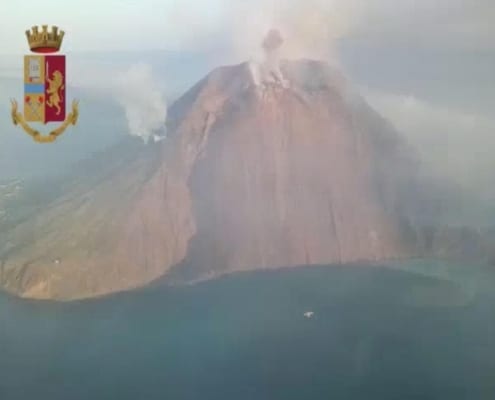 https://volcanofoundation.org/wp-content/uploads/2019/07/ERUPCION-volcan-ESTROMBOLI-volcano-active-foundation-05.jpg
763
1024
Anne Fornier
https://volcanofoundation.org/wp-content/uploads/2021/04/volcano-foundation-1-1.png
Anne Fornier2021-04-26 13:40:472021-09-27 17:09:48ONE DEAD AND ONE INJURED IN STROMBOLI VOLCANO EXPLOSION.
https://volcanofoundation.org/wp-content/uploads/2019/07/ERUPCION-volcan-ESTROMBOLI-volcano-active-foundation-05.jpg
763
1024
Anne Fornier
https://volcanofoundation.org/wp-content/uploads/2021/04/volcano-foundation-1-1.png
Anne Fornier2021-04-26 13:40:472021-09-27 17:09:48ONE DEAD AND ONE INJURED IN STROMBOLI VOLCANO EXPLOSION. https://volcanofoundation.org/wp-content/uploads/2021/06/volcano-foundation-timeout.png
1350
2000
Anne Fornier
https://volcanofoundation.org/wp-content/uploads/2021/04/volcano-foundation-1-1.png
Anne Fornier2021-04-23 17:05:372021-09-27 17:14:50THE VOLCANO FOUNDATION IS NOW IN TIMEOUT!
https://volcanofoundation.org/wp-content/uploads/2021/06/volcano-foundation-timeout.png
1350
2000
Anne Fornier
https://volcanofoundation.org/wp-content/uploads/2021/04/volcano-foundation-1-1.png
Anne Fornier2021-04-23 17:05:372021-09-27 17:14:50THE VOLCANO FOUNDATION IS NOW IN TIMEOUT!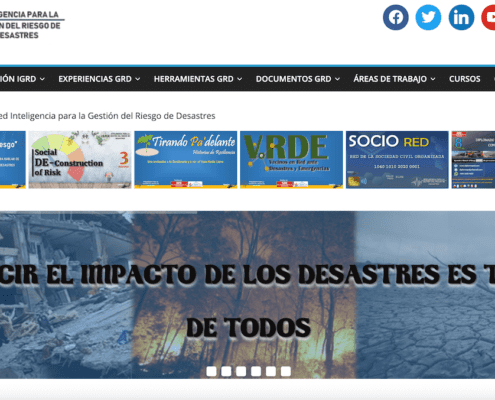 https://volcanofoundation.org/wp-content/uploads/2021/04/web-igrd.png
677
1200
Anne Fornier
https://volcanofoundation.org/wp-content/uploads/2021/04/volcano-foundation-1-1.png
Anne Fornier2021-04-14 08:43:222021-09-27 17:15:02VOLCANO ACTIVE FOUNDATION IS NOW ASSOCIATED WITH THE IGRD.
https://volcanofoundation.org/wp-content/uploads/2021/04/web-igrd.png
677
1200
Anne Fornier
https://volcanofoundation.org/wp-content/uploads/2021/04/volcano-foundation-1-1.png
Anne Fornier2021-04-14 08:43:222021-09-27 17:15:02VOLCANO ACTIVE FOUNDATION IS NOW ASSOCIATED WITH THE IGRD.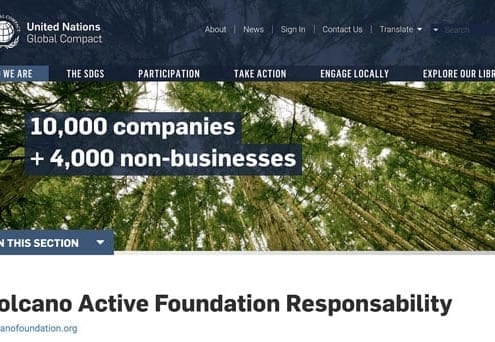 https://volcanofoundation.org/wp-content/uploads/2021/04/global-compact-volcano-foundation-min.jpg
342
600
Anne Fornier
https://volcanofoundation.org/wp-content/uploads/2021/04/volcano-foundation-1-1.png
Anne Fornier2021-04-12 17:08:042021-09-27 17:15:17WE JOIN THE UNITED NATIONS GLOBAL COMPACT
https://volcanofoundation.org/wp-content/uploads/2021/04/global-compact-volcano-foundation-min.jpg
342
600
Anne Fornier
https://volcanofoundation.org/wp-content/uploads/2021/04/volcano-foundation-1-1.png
Anne Fornier2021-04-12 17:08:042021-09-27 17:15:17WE JOIN THE UNITED NATIONS GLOBAL COMPACT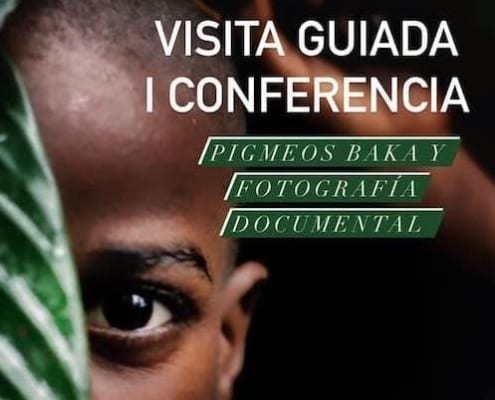 https://volcanofoundation.org/wp-content/uploads/2021/04/quim-fabrega-event-preview-497x423-1.jpeg
423
497
Anne Fornier
https://volcanofoundation.org/wp-content/uploads/2021/04/volcano-foundation-1-1.png
Anne Fornier2021-04-08 16:41:192021-09-27 17:15:32EXPOSITION PIGMEOS BAKA-QUIM FÀBREGA
https://volcanofoundation.org/wp-content/uploads/2021/04/quim-fabrega-event-preview-497x423-1.jpeg
423
497
Anne Fornier
https://volcanofoundation.org/wp-content/uploads/2021/04/volcano-foundation-1-1.png
Anne Fornier2021-04-08 16:41:192021-09-27 17:15:32EXPOSITION PIGMEOS BAKA-QUIM FÀBREGA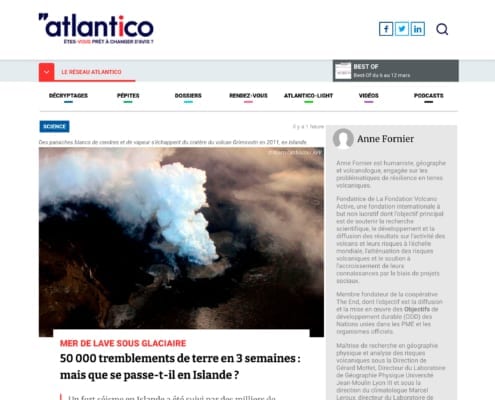 https://volcanofoundation.org/wp-content/uploads/2021/03/atlantico-articulo-anne2.jpg
1831
2262
Anne Fornier
https://volcanofoundation.org/wp-content/uploads/2021/04/volcano-foundation-1-1.png
Anne Fornier2021-03-24 11:21:032021-09-27 17:15:45ANNE FORNIER REAPPEARS IN ATLANTICO
https://volcanofoundation.org/wp-content/uploads/2021/03/atlantico-articulo-anne2.jpg
1831
2262
Anne Fornier
https://volcanofoundation.org/wp-content/uploads/2021/04/volcano-foundation-1-1.png
Anne Fornier2021-03-24 11:21:032021-09-27 17:15:45ANNE FORNIER REAPPEARS IN ATLANTICO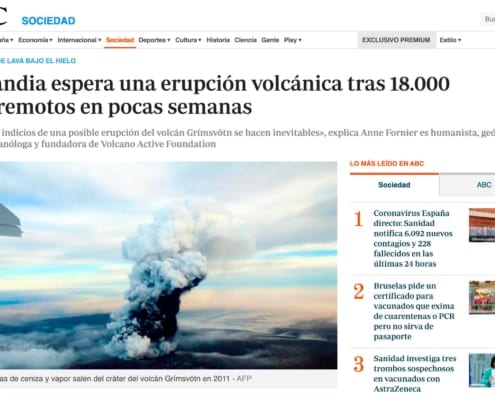 https://volcanofoundation.org/wp-content/uploads/2021/03/articulo-anne-abc.jpg
1343
2021
Anne Fornier
https://volcanofoundation.org/wp-content/uploads/2021/04/volcano-foundation-1-1.png
Anne Fornier2021-03-24 10:51:132021-09-27 17:16:00ARTICLE OF ANNE FORNIER IN ABC ABOUT VOLCANIC ERUPTION
https://volcanofoundation.org/wp-content/uploads/2021/03/articulo-anne-abc.jpg
1343
2021
Anne Fornier
https://volcanofoundation.org/wp-content/uploads/2021/04/volcano-foundation-1-1.png
Anne Fornier2021-03-24 10:51:132021-09-27 17:16:00ARTICLE OF ANNE FORNIER IN ABC ABOUT VOLCANIC ERUPTION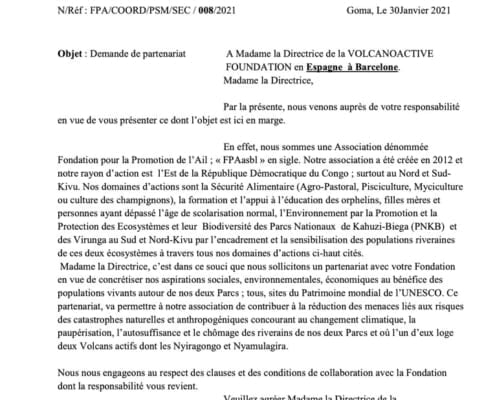
PARTNERSHIP BETWEEN THE FOUNDATION AND AND FPA ASBL
ALL, BIODIVERSITY & CULTURE, PROJECTS, RESILIENCE, UNDRR, VOLCANO CARE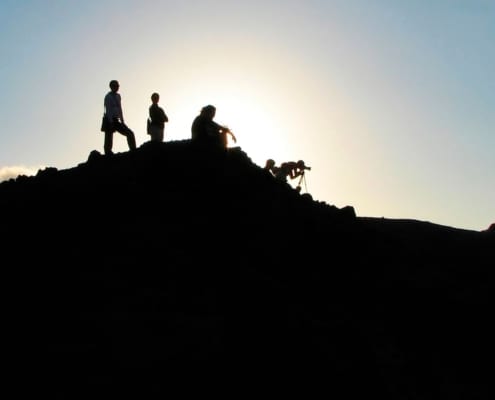 https://volcanofoundation.org/wp-content/uploads/2021/02/volcano-foundation-press.jpg
1200
1920
Anne Fornier
https://volcanofoundation.org/wp-content/uploads/2021/04/volcano-foundation-1-1.png
Anne Fornier2021-02-07 15:06:342021-09-27 17:16:49COMMUNICATION DURING A VOLCANIC CRISIS
https://volcanofoundation.org/wp-content/uploads/2021/02/volcano-foundation-press.jpg
1200
1920
Anne Fornier
https://volcanofoundation.org/wp-content/uploads/2021/04/volcano-foundation-1-1.png
Anne Fornier2021-02-07 15:06:342021-09-27 17:16:49COMMUNICATION DURING A VOLCANIC CRISIS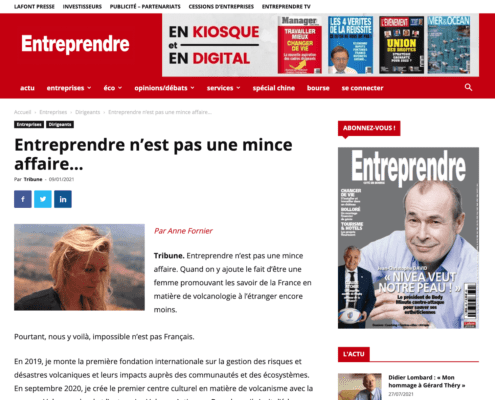 Entreprendre.fr
https://volcanofoundation.org/wp-content/uploads/2021/06/anne-fornier-entreprendre.png
1182
1500
Anne Fornier
https://volcanofoundation.org/wp-content/uploads/2021/04/volcano-foundation-1-1.png
Anne Fornier2021-01-09 15:31:042021-09-27 17:17:31ENTREPRENEURSHIP IS NOT AN EASY TASK….
Entreprendre.fr
https://volcanofoundation.org/wp-content/uploads/2021/06/anne-fornier-entreprendre.png
1182
1500
Anne Fornier
https://volcanofoundation.org/wp-content/uploads/2021/04/volcano-foundation-1-1.png
Anne Fornier2021-01-09 15:31:042021-09-27 17:17:31ENTREPRENEURSHIP IS NOT AN EASY TASK….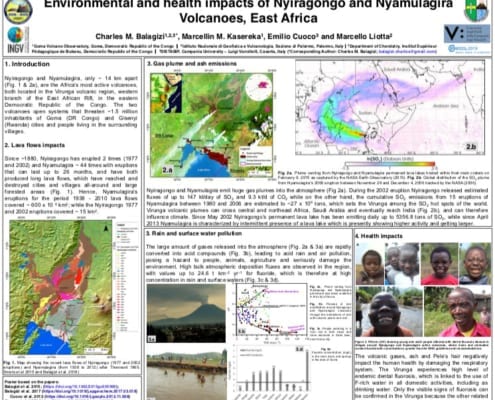 https://volcanofoundation.org/wp-content/uploads/2020/11/charles-balagizi-Environmental-and-health-impacts-of-Nyiragongo-and-Nyamulagira-Volcanoes-East-Africa.jpg
628
746
Anne Fornier
https://volcanofoundation.org/wp-content/uploads/2021/04/volcano-foundation-1-1.png
Anne Fornier2020-11-26 11:50:362021-09-27 17:17:49ENVIRONMENTAL & HEALTH IMPACTS OF NYIRAGONGO & NYAMULAGRIA
https://volcanofoundation.org/wp-content/uploads/2020/11/charles-balagizi-Environmental-and-health-impacts-of-Nyiragongo-and-Nyamulagira-Volcanoes-East-Africa.jpg
628
746
Anne Fornier
https://volcanofoundation.org/wp-content/uploads/2021/04/volcano-foundation-1-1.png
Anne Fornier2020-11-26 11:50:362021-09-27 17:17:49ENVIRONMENTAL & HEALTH IMPACTS OF NYIRAGONGO & NYAMULAGRIA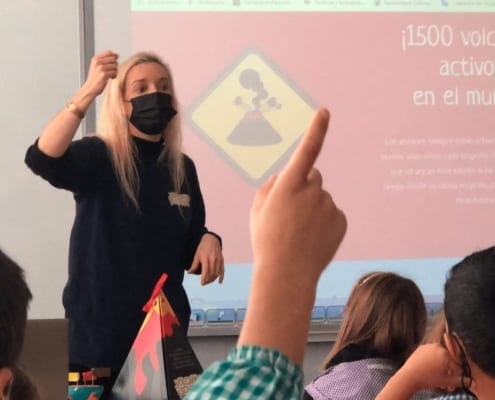 https://volcanofoundation.org/wp-content/uploads/2020/11/Anne-Fornier-Volcano-School-1.jpg
1242
2208
Anne Fornier
https://volcanofoundation.org/wp-content/uploads/2021/04/volcano-foundation-1-1.png
Anne Fornier2020-11-10 16:21:042021-09-27 17:18:39VOLCANO SCHOOL IN THE JOAN PELEGRÍ SCHOOL
https://volcanofoundation.org/wp-content/uploads/2020/11/Anne-Fornier-Volcano-School-1.jpg
1242
2208
Anne Fornier
https://volcanofoundation.org/wp-content/uploads/2021/04/volcano-foundation-1-1.png
Anne Fornier2020-11-10 16:21:042021-09-27 17:18:39VOLCANO SCHOOL IN THE JOAN PELEGRÍ SCHOOL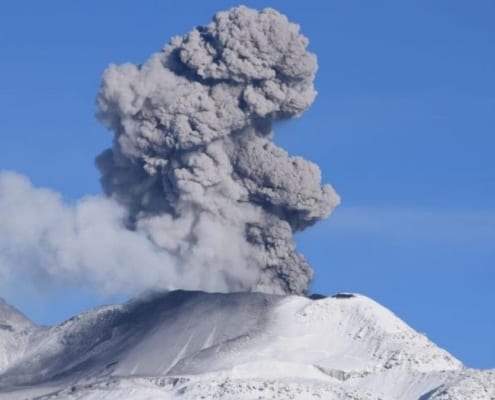 https://volcanofoundation.org/wp-content/uploads/2019/08/volcán-sabancaya.jpeg
697
1214
Anne Fornier
https://volcanofoundation.org/wp-content/uploads/2021/04/volcano-foundation-1-1.png
Anne Fornier2020-10-13 15:16:192021-09-27 17:18:51KEEP AN EYE ON VOLCANIC ACTIVITIES
https://volcanofoundation.org/wp-content/uploads/2019/08/volcán-sabancaya.jpeg
697
1214
Anne Fornier
https://volcanofoundation.org/wp-content/uploads/2021/04/volcano-foundation-1-1.png
Anne Fornier2020-10-13 15:16:192021-09-27 17:18:51KEEP AN EYE ON VOLCANIC ACTIVITIES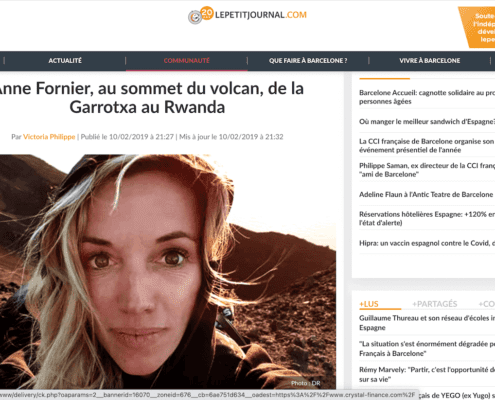 https://volcanofoundation.org/wp-content/uploads/2020/09/why-volcano-foundation-lepetitjournal.png
823
1500
Anne Fornier
https://volcanofoundation.org/wp-content/uploads/2021/04/volcano-foundation-1-1.png
Anne Fornier2020-09-29 16:07:382021-09-27 17:19:01WHY DOES THE VOLCANO ACTIVE FOUNDATION EXIST?
https://volcanofoundation.org/wp-content/uploads/2020/09/why-volcano-foundation-lepetitjournal.png
823
1500
Anne Fornier
https://volcanofoundation.org/wp-content/uploads/2021/04/volcano-foundation-1-1.png
Anne Fornier2020-09-29 16:07:382021-09-27 17:19:01WHY DOES THE VOLCANO ACTIVE FOUNDATION EXIST?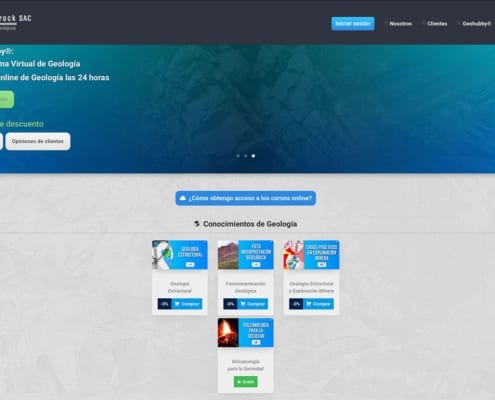 https://volcanofoundation.org/wp-content/uploads/2020/04/Volcanologia-para-la-sociedad.jpg
897
1671
Anne Fornier
https://volcanofoundation.org/wp-content/uploads/2021/04/volcano-foundation-1-1.png
Anne Fornier2020-04-06 09:00:172021-09-27 17:19:12VOLCANOLOGY FOR SOCIETY
https://volcanofoundation.org/wp-content/uploads/2020/04/Volcanologia-para-la-sociedad.jpg
897
1671
Anne Fornier
https://volcanofoundation.org/wp-content/uploads/2021/04/volcano-foundation-1-1.png
Anne Fornier2020-04-06 09:00:172021-09-27 17:19:12VOLCANOLOGY FOR SOCIETY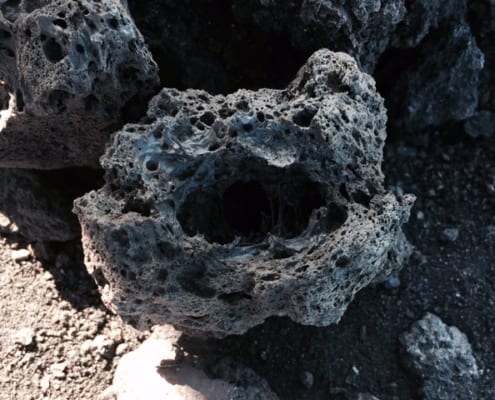 https://volcanofoundation.org/wp-content/uploads/2020/02/FullSizeRender.jpeg
480
600
Anne Fornier
https://volcanofoundation.org/wp-content/uploads/2021/04/volcano-foundation-1-1.png
Anne Fornier2020-02-28 14:10:352021-09-27 17:19:23GEOASTROLAB -LABORATORY OF GEOSCIENCE & ASTRONOMY PROJECT
https://volcanofoundation.org/wp-content/uploads/2020/02/FullSizeRender.jpeg
480
600
Anne Fornier
https://volcanofoundation.org/wp-content/uploads/2021/04/volcano-foundation-1-1.png
Anne Fornier2020-02-28 14:10:352021-09-27 17:19:23GEOASTROLAB -LABORATORY OF GEOSCIENCE & ASTRONOMY PROJECT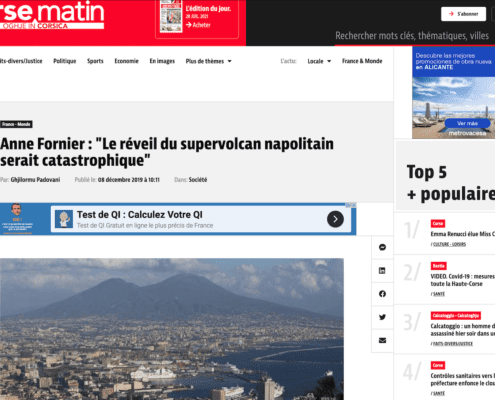 https://volcanofoundation.org/wp-content/uploads/2021/07/volcano-foundation-corse-matin.png
1009
1500
Anne Fornier
https://volcanofoundation.org/wp-content/uploads/2021/04/volcano-foundation-1-1.png
Anne Fornier2019-12-08 12:32:012021-09-27 17:19:33THE AWAKENING OF THE NEAPOLITAN SUPERVOLCANO WOULD BE A CATASTROPHE
https://volcanofoundation.org/wp-content/uploads/2021/07/volcano-foundation-corse-matin.png
1009
1500
Anne Fornier
https://volcanofoundation.org/wp-content/uploads/2021/04/volcano-foundation-1-1.png
Anne Fornier2019-12-08 12:32:012021-09-27 17:19:33THE AWAKENING OF THE NEAPOLITAN SUPERVOLCANO WOULD BE A CATASTROPHE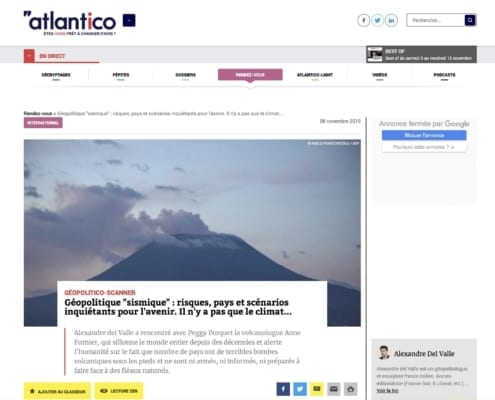 https://volcanofoundation.org/wp-content/uploads/2019/11/anne-fornier-en-atlantico-1-2-scaled.jpg
1528
2560
Anne Fornier
https://volcanofoundation.org/wp-content/uploads/2021/04/volcano-foundation-1-1.png
Anne Fornier2019-11-18 16:22:482021-09-27 17:19:46INTERVIEW OF ALEXANDRE DEL VALLE TO ANNE FORNIER
https://volcanofoundation.org/wp-content/uploads/2019/11/anne-fornier-en-atlantico-1-2-scaled.jpg
1528
2560
Anne Fornier
https://volcanofoundation.org/wp-content/uploads/2021/04/volcano-foundation-1-1.png
Anne Fornier2019-11-18 16:22:482021-09-27 17:19:46INTERVIEW OF ALEXANDRE DEL VALLE TO ANNE FORNIER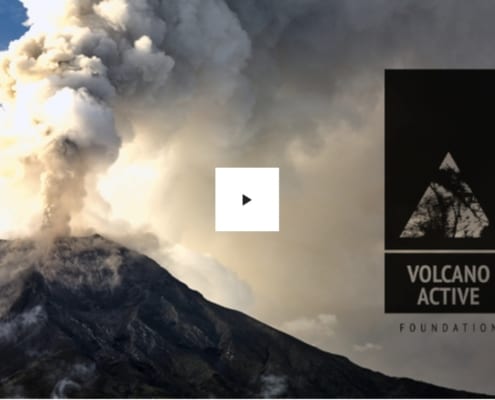 https://volcanofoundation.org/wp-content/uploads/2019/10/crowdfounding-volcano-active-foundation.jpg
754
1246
Anne Fornier
https://volcanofoundation.org/wp-content/uploads/2021/04/volcano-foundation-1-1.png
Anne Fornier2019-11-12 15:08:322021-09-27 17:20:09SERIES OF DOCUMENTARIES TO EDUCATE THE WORLD
https://volcanofoundation.org/wp-content/uploads/2019/10/crowdfounding-volcano-active-foundation.jpg
754
1246
Anne Fornier
https://volcanofoundation.org/wp-content/uploads/2021/04/volcano-foundation-1-1.png
Anne Fornier2019-11-12 15:08:322021-09-27 17:20:09SERIES OF DOCUMENTARIES TO EDUCATE THE WORLD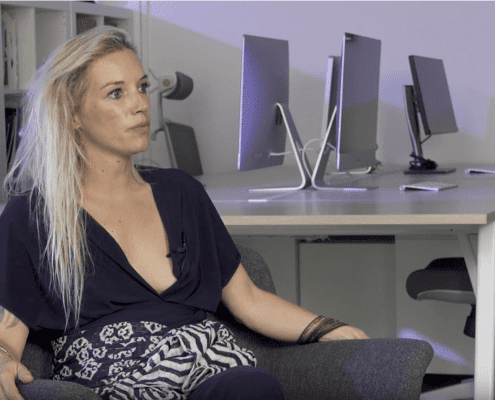 https://volcanofoundation.org/wp-content/uploads/2019/09/Captura-de-pantalla-2019-09-09-a-las-16.31.13.png
1188
2244
Anne Fornier
https://volcanofoundation.org/wp-content/uploads/2021/04/volcano-foundation-1-1.png
Anne Fornier2019-09-09 15:00:002021-09-27 17:20:23INTERVIEW WITH ANNE FORNIER ON JET8
https://volcanofoundation.org/wp-content/uploads/2019/09/Captura-de-pantalla-2019-09-09-a-las-16.31.13.png
1188
2244
Anne Fornier
https://volcanofoundation.org/wp-content/uploads/2021/04/volcano-foundation-1-1.png
Anne Fornier2019-09-09 15:00:002021-09-27 17:20:23INTERVIEW WITH ANNE FORNIER ON JET8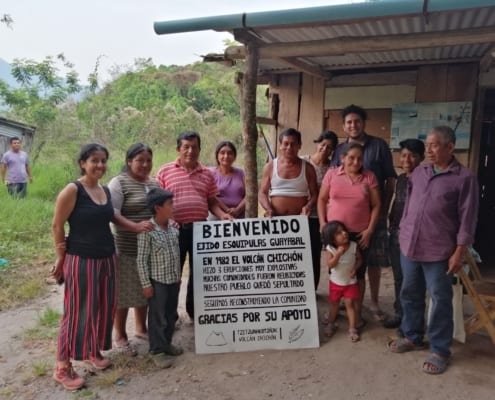 https://volcanofoundation.org/wp-content/uploads/2019/06/IMG_20190520_1859561-e1568884622975.jpg
1485
1980
Anne Fornier
https://volcanofoundation.org/wp-content/uploads/2021/04/volcano-foundation-1-1.png
Anne Fornier2019-09-09 14:24:052021-09-27 17:21:07THE FOUNDATION IN MEXICO
https://volcanofoundation.org/wp-content/uploads/2019/06/IMG_20190520_1859561-e1568884622975.jpg
1485
1980
Anne Fornier
https://volcanofoundation.org/wp-content/uploads/2021/04/volcano-foundation-1-1.png
Anne Fornier2019-09-09 14:24:052021-09-27 17:21:07THE FOUNDATION IN MEXICO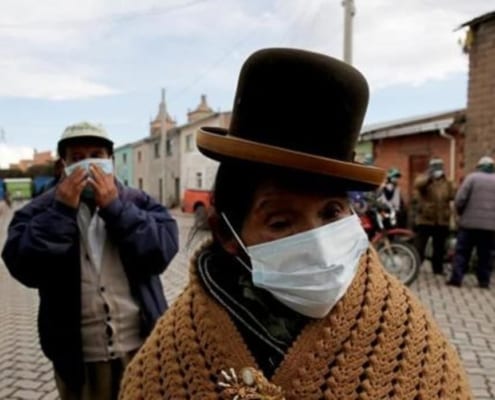 https://volcanofoundation.org/wp-content/uploads/2019/07/volcan-ubinas-kDzD-1240x698@abc.jpg
698
1240
Anne Fornier
https://volcanofoundation.org/wp-content/uploads/2021/04/volcano-foundation-1-1.png
Anne Fornier2019-08-22 08:32:462021-09-27 17:22:08HOW DOES A VOLCANIC ERUPTION AFFECT YOU?
https://volcanofoundation.org/wp-content/uploads/2019/07/volcan-ubinas-kDzD-1240x698@abc.jpg
698
1240
Anne Fornier
https://volcanofoundation.org/wp-content/uploads/2021/04/volcano-foundation-1-1.png
Anne Fornier2019-08-22 08:32:462021-09-27 17:22:08HOW DOES A VOLCANIC ERUPTION AFFECT YOU?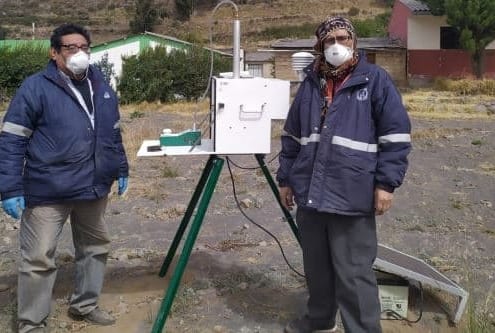 https://volcanofoundation.org/wp-content/uploads/2019/08/000608291M.jpg
333
500
Anne Fornier
https://volcanofoundation.org/wp-content/uploads/2021/04/volcano-foundation-1-1.png
Anne Fornier2019-08-06 11:19:122021-09-27 17:22:19WORRYING SITUATION OF THE UBINAS VOLCANO
https://volcanofoundation.org/wp-content/uploads/2019/08/000608291M.jpg
333
500
Anne Fornier
https://volcanofoundation.org/wp-content/uploads/2021/04/volcano-foundation-1-1.png
Anne Fornier2019-08-06 11:19:122021-09-27 17:22:19WORRYING SITUATION OF THE UBINAS VOLCANO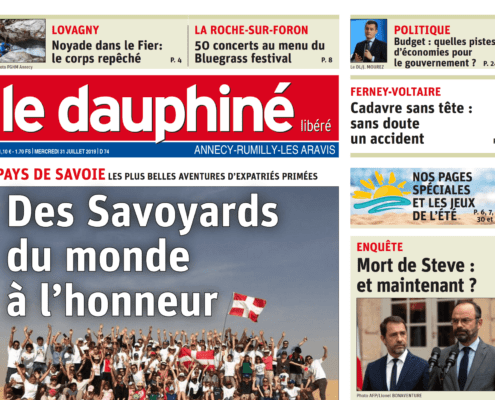 https://volcanofoundation.org/wp-content/uploads/2019/08/fundacion-en-le-dauphine.png
1466
1980
Anne Fornier
https://volcanofoundation.org/wp-content/uploads/2021/04/volcano-foundation-1-1.png
Anne Fornier2019-08-05 15:16:332021-09-27 17:22:30THE FOUNDATION IN LE DAUPHINÉ LIBÉRÉ
https://volcanofoundation.org/wp-content/uploads/2019/08/fundacion-en-le-dauphine.png
1466
1980
Anne Fornier
https://volcanofoundation.org/wp-content/uploads/2021/04/volcano-foundation-1-1.png
Anne Fornier2019-08-05 15:16:332021-09-27 17:22:30THE FOUNDATION IN LE DAUPHINÉ LIBÉRÉ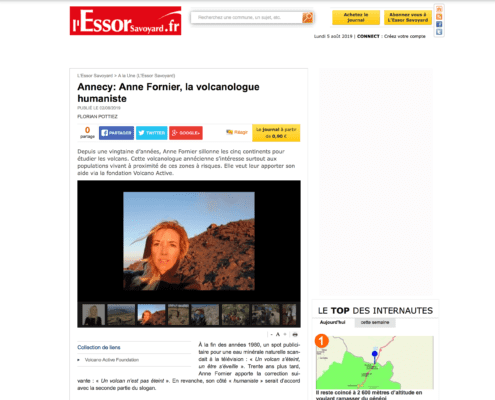 https://volcanofoundation.org/wp-content/uploads/2019/08/Captura-de-pantalla-2019-08-05-a-las-16.16.04.png
2112
2626
Anne Fornier
https://volcanofoundation.org/wp-content/uploads/2021/04/volcano-foundation-1-1.png
Anne Fornier2019-08-05 14:33:232021-09-27 17:22:41THE FOUNDATION AT LESSOR SAVOYARD
https://volcanofoundation.org/wp-content/uploads/2019/08/Captura-de-pantalla-2019-08-05-a-las-16.16.04.png
2112
2626
Anne Fornier
https://volcanofoundation.org/wp-content/uploads/2021/04/volcano-foundation-1-1.png
Anne Fornier2019-08-05 14:33:232021-09-27 17:22:41THE FOUNDATION AT LESSOR SAVOYARD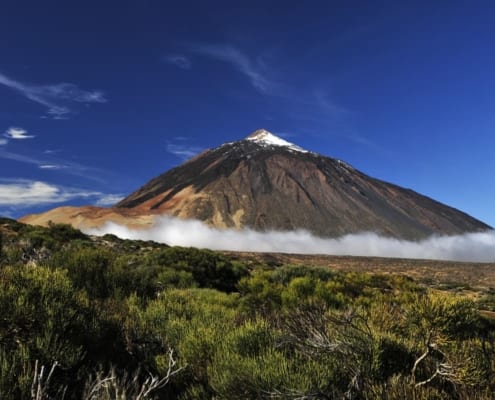 https://volcanofoundation.org/wp-content/uploads/2019/06/TEIDE3.jpg
800
1200
Anne Fornier
https://volcanofoundation.org/wp-content/uploads/2021/04/volcano-foundation-1-1.png
Anne Fornier2019-06-11 15:34:472021-09-27 17:22:58EL TEIDE IS PART OF AN ACTIVE VOLCANIC SYSTEM
https://volcanofoundation.org/wp-content/uploads/2019/06/TEIDE3.jpg
800
1200
Anne Fornier
https://volcanofoundation.org/wp-content/uploads/2021/04/volcano-foundation-1-1.png
Anne Fornier2019-06-11 15:34:472021-09-27 17:22:58EL TEIDE IS PART OF AN ACTIVE VOLCANIC SYSTEM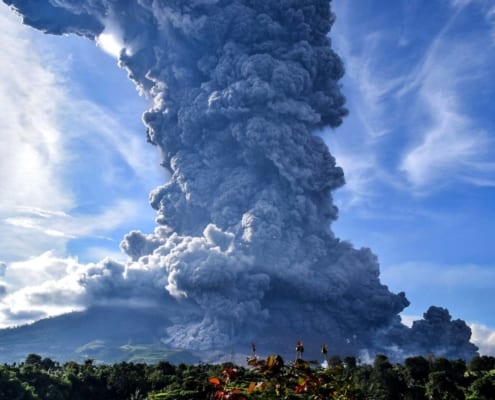 https://volcanofoundation.org/wp-content/uploads/2019/06/indonesia-volcano-active-1.jpg
1531
2041
Anne Fornier
https://volcanofoundation.org/wp-content/uploads/2021/04/volcano-foundation-1-1.png
Anne Fornier2019-06-11 08:27:342021-09-27 17:23:10SINABUNG ERUPTS
https://volcanofoundation.org/wp-content/uploads/2019/06/indonesia-volcano-active-1.jpg
1531
2041
Anne Fornier
https://volcanofoundation.org/wp-content/uploads/2021/04/volcano-foundation-1-1.png
Anne Fornier2019-06-11 08:27:342021-09-27 17:23:10SINABUNG ERUPTS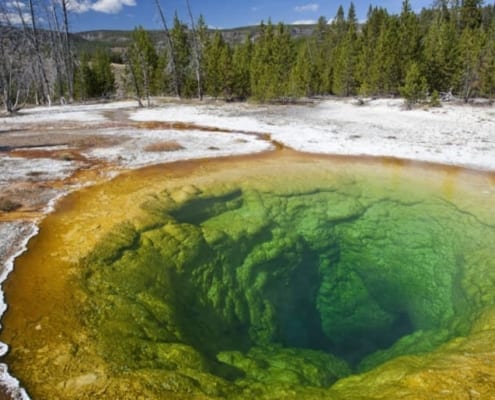 https://volcanofoundation.org/wp-content/uploads/2019/06/yellowstone-volcan-.jpg
515
1030
Anne Fornier
https://volcanofoundation.org/wp-content/uploads/2021/04/volcano-foundation-1-1.png
Anne Fornier2019-06-04 14:55:072021-09-27 17:23:30YELLOWSTONE ERUPTION COULD CAUSE THE END OF HUMANITY
https://volcanofoundation.org/wp-content/uploads/2019/06/yellowstone-volcan-.jpg
515
1030
Anne Fornier
https://volcanofoundation.org/wp-content/uploads/2021/04/volcano-foundation-1-1.png
Anne Fornier2019-06-04 14:55:072021-09-27 17:23:30YELLOWSTONE ERUPTION COULD CAUSE THE END OF HUMANITY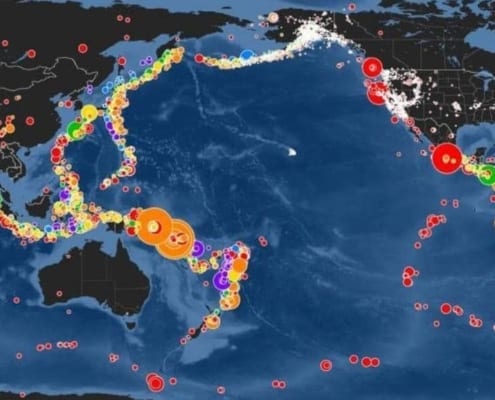 https://volcanofoundation.org/wp-content/uploads/2019/05/0.1-1.jpeg
578
1366
Anne Fornier
https://volcanofoundation.org/wp-content/uploads/2021/04/volcano-foundation-1-1.png
Anne Fornier2019-05-27 16:05:142021-09-27 17:23:41WHEN THE EARTH AWAKENS ITS BELT OF FIRE
https://volcanofoundation.org/wp-content/uploads/2019/05/0.1-1.jpeg
578
1366
Anne Fornier
https://volcanofoundation.org/wp-content/uploads/2021/04/volcano-foundation-1-1.png
Anne Fornier2019-05-27 16:05:142021-09-27 17:23:41WHEN THE EARTH AWAKENS ITS BELT OF FIRE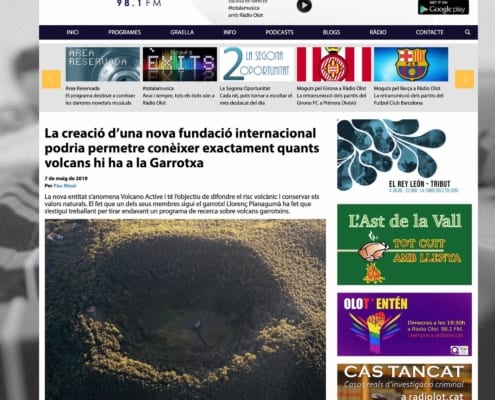 https://volcanofoundation.org/wp-content/uploads/2019/05/Captura-de-pantalla-2019-05-07-a-las-17.33.54-e1568884781610.jpg
1848
1980
Anne Fornier
https://volcanofoundation.org/wp-content/uploads/2021/04/volcano-foundation-1-1.png
Anne Fornier2019-05-07 16:01:022021-09-27 17:23:53THE FOUNDATION on RADIO OLOT
https://volcanofoundation.org/wp-content/uploads/2019/05/Captura-de-pantalla-2019-05-07-a-las-17.33.54-e1568884781610.jpg
1848
1980
Anne Fornier
https://volcanofoundation.org/wp-content/uploads/2021/04/volcano-foundation-1-1.png
Anne Fornier2019-05-07 16:01:022021-09-27 17:23:53THE FOUNDATION on RADIO OLOT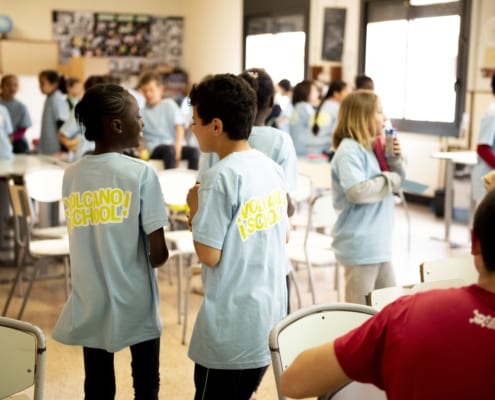 https://volcanofoundation.org/wp-content/uploads/2019/05/DSC6226-scaled.jpg
1709
2560
Anne Fornier
https://volcanofoundation.org/wp-content/uploads/2021/04/volcano-foundation-1-1.png
Anne Fornier2019-05-02 10:51:282021-09-27 17:24:03VOLCANO SCHOOL IN OLOT
https://volcanofoundation.org/wp-content/uploads/2019/05/DSC6226-scaled.jpg
1709
2560
Anne Fornier
https://volcanofoundation.org/wp-content/uploads/2021/04/volcano-foundation-1-1.png
Anne Fornier2019-05-02 10:51:282021-09-27 17:24:03VOLCANO SCHOOL IN OLOT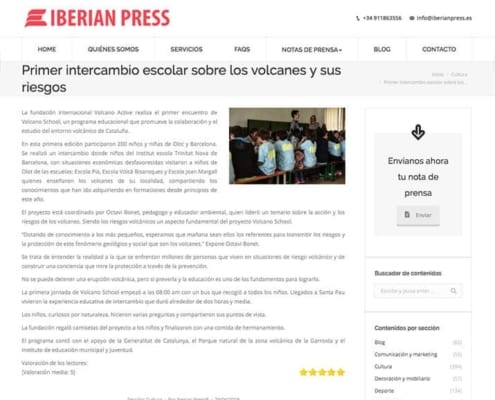 https://volcanofoundation.org/wp-content/uploads/2019/05/iberianpress.jpg
628
715
Anne Fornier
https://volcanofoundation.org/wp-content/uploads/2021/04/volcano-foundation-1-1.png
Anne Fornier2019-05-02 08:14:052021-09-27 17:24:18THE FOUNDATION AND VOLCANO SCHOOL AT IBERIAN PRESS
https://volcanofoundation.org/wp-content/uploads/2019/05/iberianpress.jpg
628
715
Anne Fornier
https://volcanofoundation.org/wp-content/uploads/2021/04/volcano-foundation-1-1.png
Anne Fornier2019-05-02 08:14:052021-09-27 17:24:18THE FOUNDATION AND VOLCANO SCHOOL AT IBERIAN PRESS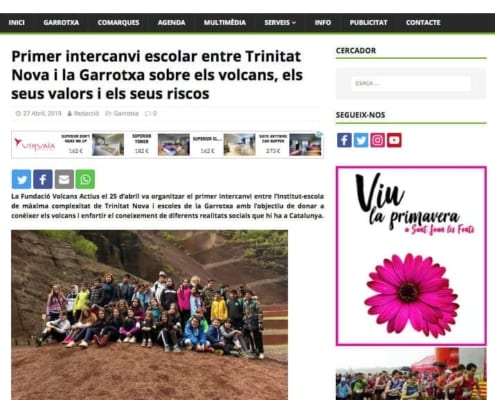 https://volcanofoundation.org/wp-content/uploads/2019/05/elgarrotxi.jpg
739
715
Anne Fornier
https://volcanofoundation.org/wp-content/uploads/2021/04/volcano-foundation-1-1.png
Anne Fornier2019-05-02 08:00:432021-09-27 17:25:13THE FOUNDATION and VOLCANO SCHOOL AT THE GARROTXI
https://volcanofoundation.org/wp-content/uploads/2019/05/elgarrotxi.jpg
739
715
Anne Fornier
https://volcanofoundation.org/wp-content/uploads/2021/04/volcano-foundation-1-1.png
Anne Fornier2019-05-02 08:00:432021-09-27 17:25:13THE FOUNDATION and VOLCANO SCHOOL AT THE GARROTXI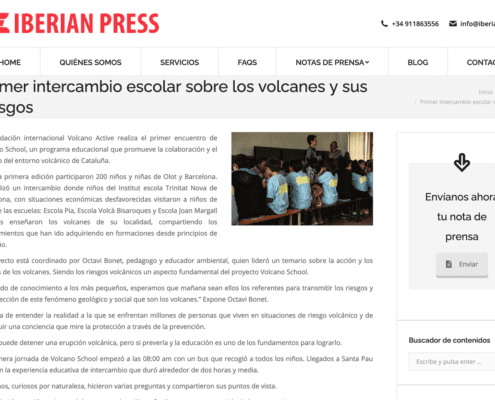 Iberian Press
https://volcanofoundation.org/wp-content/uploads/2021/07/volcanoschool-iberianpress.png
1028
1500
Anne Fornier
https://volcanofoundation.org/wp-content/uploads/2021/04/volcano-foundation-1-1.png
Anne Fornier2019-04-29 12:10:492021-09-27 17:25:54FIRST SCHOOL EXCHANGE ON VOLCANOES AND THEIR HAZARDS
Iberian Press
https://volcanofoundation.org/wp-content/uploads/2021/07/volcanoschool-iberianpress.png
1028
1500
Anne Fornier
https://volcanofoundation.org/wp-content/uploads/2021/04/volcano-foundation-1-1.png
Anne Fornier2019-04-29 12:10:492021-09-27 17:25:54FIRST SCHOOL EXCHANGE ON VOLCANOES AND THEIR HAZARDS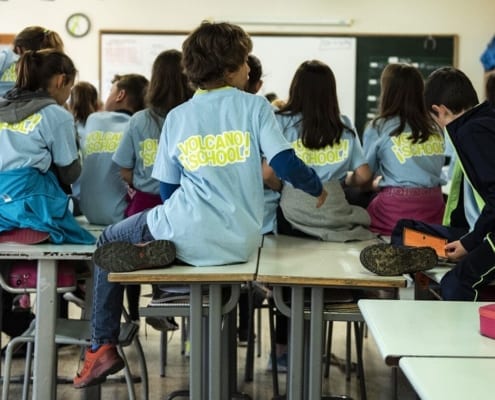 https://volcanofoundation.org/wp-content/uploads/2019/04/volcano-active-foundation-volcano-school-proyecto02.jpg
815
1900
Anne Fornier
https://volcanofoundation.org/wp-content/uploads/2021/04/volcano-foundation-1-1.png
Anne Fornier2019-04-26 07:52:482021-09-27 17:28:22TE ACERCO A MI VOLCAN
https://volcanofoundation.org/wp-content/uploads/2019/04/volcano-active-foundation-volcano-school-proyecto02.jpg
815
1900
Anne Fornier
https://volcanofoundation.org/wp-content/uploads/2021/04/volcano-foundation-1-1.png
Anne Fornier2019-04-26 07:52:482021-09-27 17:28:22TE ACERCO A MI VOLCAN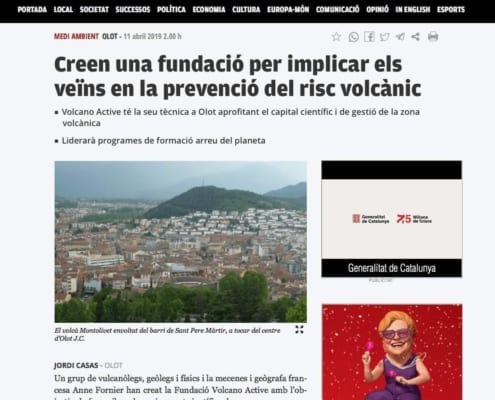 https://volcanofoundation.org/wp-content/uploads/2019/04/volcanofoundation-elpuntavui-11-04-19-1.jpg
1116
1052
Anne Fornier
https://volcanofoundation.org/wp-content/uploads/2021/04/volcano-foundation-1-1.png
Anne Fornier2019-04-25 13:31:522021-09-27 17:28:35THE FOUNDATION IN EL PUNT AVUI
https://volcanofoundation.org/wp-content/uploads/2019/04/volcanofoundation-elpuntavui-11-04-19-1.jpg
1116
1052
Anne Fornier
https://volcanofoundation.org/wp-content/uploads/2021/04/volcano-foundation-1-1.png
Anne Fornier2019-04-25 13:31:522021-09-27 17:28:35THE FOUNDATION IN EL PUNT AVUI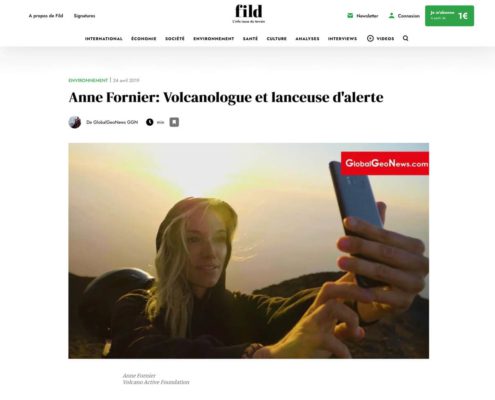 https://volcanofoundation.org/wp-content/uploads/2021/06/fildmedia-annefornier-volcanofoundation.jpg
964
1200
Anne Fornier
https://volcanofoundation.org/wp-content/uploads/2021/04/volcano-foundation-1-1.png
Anne Fornier2019-04-24 14:30:112021-09-27 17:29:57ANNE FORNIER: VOLCANOLOGIST AND WHISTLEBLOWER
https://volcanofoundation.org/wp-content/uploads/2021/06/fildmedia-annefornier-volcanofoundation.jpg
964
1200
Anne Fornier
https://volcanofoundation.org/wp-content/uploads/2021/04/volcano-foundation-1-1.png
Anne Fornier2019-04-24 14:30:112021-09-27 17:29:57ANNE FORNIER: VOLCANOLOGIST AND WHISTLEBLOWER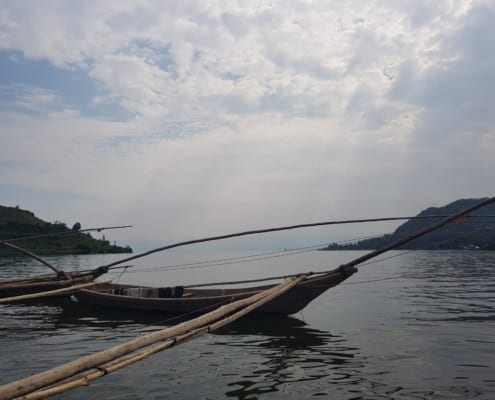 https://volcanofoundation.org/wp-content/uploads/2019/04/20180609_144602-e1568884935340.jpg
1485
1980
Anne Fornier
https://volcanofoundation.org/wp-content/uploads/2021/04/volcano-foundation-1-1.png
Anne Fornier2019-04-09 08:12:012021-09-27 17:30:07DEADLY LAKES
https://volcanofoundation.org/wp-content/uploads/2019/04/20180609_144602-e1568884935340.jpg
1485
1980
Anne Fornier
https://volcanofoundation.org/wp-content/uploads/2021/04/volcano-foundation-1-1.png
Anne Fornier2019-04-09 08:12:012021-09-27 17:30:07DEADLY LAKES
THE PARICUTIN VOLCANO. TRAILS AND INTERPRETATION.
ALL, BIODIVERSITY & CULTURE, PROJECTS, VOLCANO CARE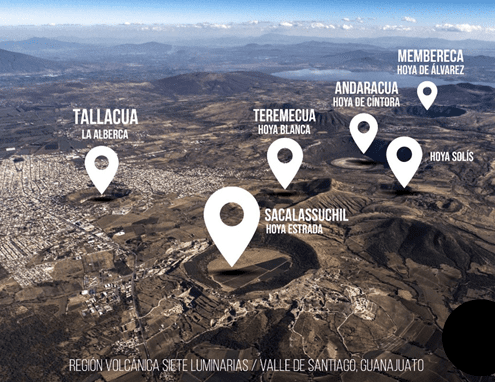 https://volcanofoundation.org/wp-content/uploads/2019/04/image-5.png
382
576
Anne Fornier
https://volcanofoundation.org/wp-content/uploads/2021/04/volcano-foundation-1-1.png
Anne Fornier2019-04-04 14:04:492021-09-27 17:30:31THE SEVEN LUMINARIES. CRATERS BETWEEN VILLAGES.
https://volcanofoundation.org/wp-content/uploads/2019/04/image-5.png
382
576
Anne Fornier
https://volcanofoundation.org/wp-content/uploads/2021/04/volcano-foundation-1-1.png
Anne Fornier2019-04-04 14:04:492021-09-27 17:30:31THE SEVEN LUMINARIES. CRATERS BETWEEN VILLAGES.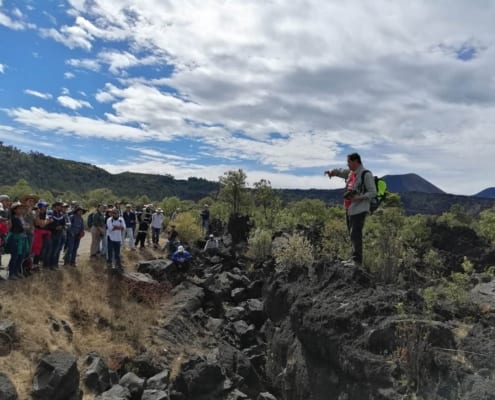 https://volcanofoundation.org/wp-content/uploads/2019/04/red-vulcanologos-volcanofoundation-1-1500x1125.jpg
1125
1500
Anne Fornier
https://volcanofoundation.org/wp-content/uploads/2021/04/volcano-foundation-1-1.png
Anne Fornier2019-04-04 12:47:462021-09-27 17:30:43INTERNATIONAL NETWORK OF VOLCANO GUIDES
https://volcanofoundation.org/wp-content/uploads/2019/04/red-vulcanologos-volcanofoundation-1-1500x1125.jpg
1125
1500
Anne Fornier
https://volcanofoundation.org/wp-content/uploads/2021/04/volcano-foundation-1-1.png
Anne Fornier2019-04-04 12:47:462021-09-27 17:30:43INTERNATIONAL NETWORK OF VOLCANO GUIDES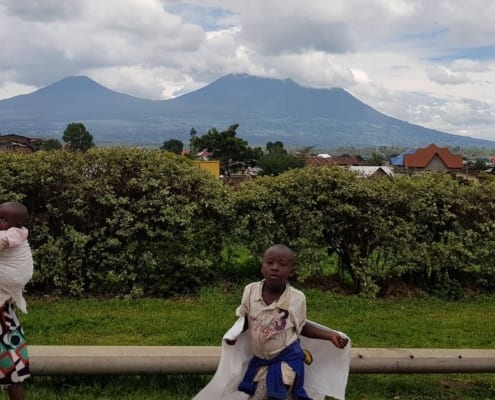 https://volcanofoundation.org/wp-content/uploads/2018/12/volcano-foundation-news-05.jpg
1080
1920
Anne Fornier
https://volcanofoundation.org/wp-content/uploads/2021/04/volcano-foundation-1-1.png
Anne Fornier2019-04-03 16:24:092021-09-27 17:31:10NATURAL HAZARDS IN GOMA AND THE SURROUNDING VILLAGES
https://volcanofoundation.org/wp-content/uploads/2018/12/volcano-foundation-news-05.jpg
1080
1920
Anne Fornier
https://volcanofoundation.org/wp-content/uploads/2021/04/volcano-foundation-1-1.png
Anne Fornier2019-04-03 16:24:092021-09-27 17:31:10NATURAL HAZARDS IN GOMA AND THE SURROUNDING VILLAGES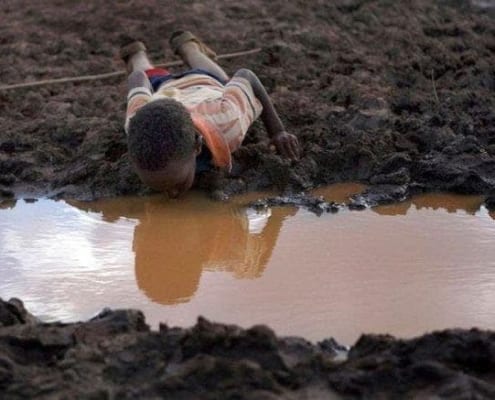 https://volcanofoundation.org/wp-content/uploads/2019/08/contaminacion-agua-volcan-africa.jpg
437
720
Anne Fornier
https://volcanofoundation.org/wp-content/uploads/2021/04/volcano-foundation-1-1.png
Anne Fornier2019-04-03 15:48:212021-09-27 17:31:24INFLUENCE OF MOISTURE SOURCE DYNAMICS AND WEATHER PATTERNS IN CENTRAL-EASTERN AFRICA
https://volcanofoundation.org/wp-content/uploads/2019/08/contaminacion-agua-volcan-africa.jpg
437
720
Anne Fornier
https://volcanofoundation.org/wp-content/uploads/2021/04/volcano-foundation-1-1.png
Anne Fornier2019-04-03 15:48:212021-09-27 17:31:24INFLUENCE OF MOISTURE SOURCE DYNAMICS AND WEATHER PATTERNS IN CENTRAL-EASTERN AFRICA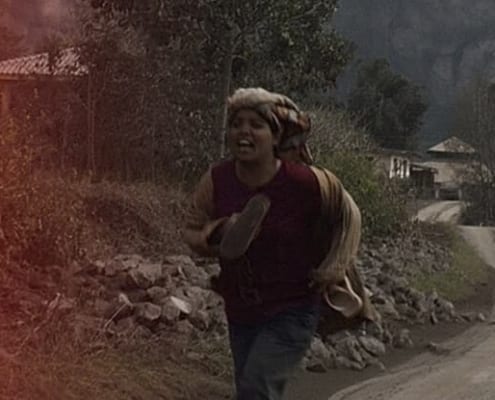 https://volcanofoundation.org/wp-content/uploads/2019/03/tira-claim-bg.jpg
415
1800
Anne Fornier
https://volcanofoundation.org/wp-content/uploads/2021/04/volcano-foundation-1-1.png
Anne Fornier2019-02-19 12:12:172021-09-27 17:32:32VEI HOW DO YOU RATE THE STRENGTH OF AN ERUPTION?
https://volcanofoundation.org/wp-content/uploads/2019/03/tira-claim-bg.jpg
415
1800
Anne Fornier
https://volcanofoundation.org/wp-content/uploads/2021/04/volcano-foundation-1-1.png
Anne Fornier2019-02-19 12:12:172021-09-27 17:32:32VEI HOW DO YOU RATE THE STRENGTH OF AN ERUPTION?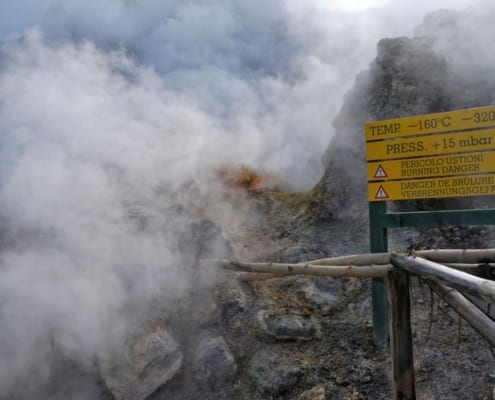 https://volcanofoundation.org/wp-content/uploads/2019/02/Volcano-active-foundation-campi-flegrei.jpg
1200
1920
Anne Fornier
https://volcanofoundation.org/wp-content/uploads/2021/04/volcano-foundation-1-1.png
Anne Fornier2019-02-18 17:07:142021-09-27 17:32:43CAMPI FLEGREI, A TICKING TIME BOMB
https://volcanofoundation.org/wp-content/uploads/2019/02/Volcano-active-foundation-campi-flegrei.jpg
1200
1920
Anne Fornier
https://volcanofoundation.org/wp-content/uploads/2021/04/volcano-foundation-1-1.png
Anne Fornier2019-02-18 17:07:142021-09-27 17:32:43CAMPI FLEGREI, A TICKING TIME BOMB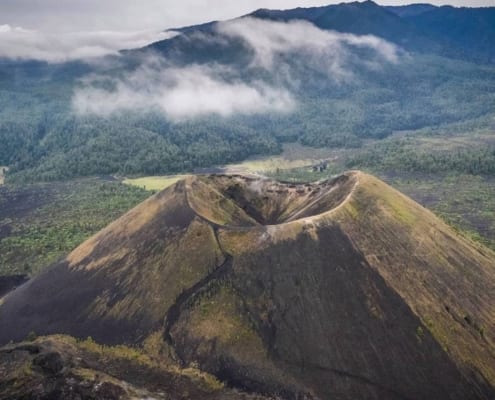 https://volcanofoundation.org/wp-content/uploads/2019/01/50609801_124290811952835_4551867685318688768_o.jpg
1958
2048
Anne Fornier
https://volcanofoundation.org/wp-content/uploads/2021/04/volcano-foundation-1-1.png
Anne Fornier2019-01-23 11:03:272021-09-27 17:39:35HOW A VOLCANO IS CREATED? THE HISTORY OF PARICUTÍN
https://volcanofoundation.org/wp-content/uploads/2019/01/50609801_124290811952835_4551867685318688768_o.jpg
1958
2048
Anne Fornier
https://volcanofoundation.org/wp-content/uploads/2021/04/volcano-foundation-1-1.png
Anne Fornier2019-01-23 11:03:272021-09-27 17:39:35HOW A VOLCANO IS CREATED? THE HISTORY OF PARICUTÍN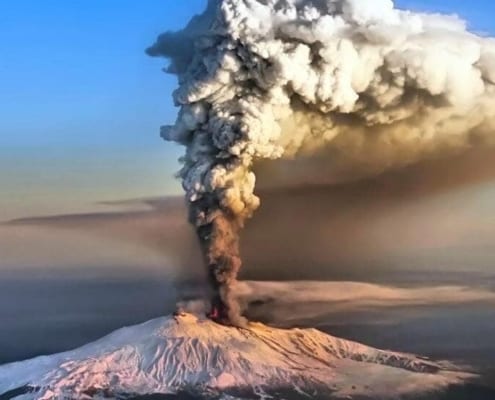 https://volcanofoundation.org/wp-content/uploads/2019/01/Etna-1024x550.jpg
550
1024
Anne Fornier
https://volcanofoundation.org/wp-content/uploads/2021/04/volcano-foundation-1-1.png
Anne Fornier2019-01-16 10:52:182021-09-27 17:40:55COULD ETNA CAUSE A TSUNAMI?
https://volcanofoundation.org/wp-content/uploads/2019/01/Etna-1024x550.jpg
550
1024
Anne Fornier
https://volcanofoundation.org/wp-content/uploads/2021/04/volcano-foundation-1-1.png
Anne Fornier2019-01-16 10:52:182021-09-27 17:40:55COULD ETNA CAUSE A TSUNAMI? https://volcanofoundation.org/wp-content/uploads/2018/12/volcano-foundation-news-05.jpg
1080
1920
Anne Fornier
https://volcanofoundation.org/wp-content/uploads/2021/04/volcano-foundation-1-1.png
Anne Fornier2018-12-20 12:40:492021-09-27 17:48:16THE FERTILITY OF VOLCANOES
https://volcanofoundation.org/wp-content/uploads/2018/12/volcano-foundation-news-05.jpg
1080
1920
Anne Fornier
https://volcanofoundation.org/wp-content/uploads/2021/04/volcano-foundation-1-1.png
Anne Fornier2018-12-20 12:40:492021-09-27 17:48:16THE FERTILITY OF VOLCANOES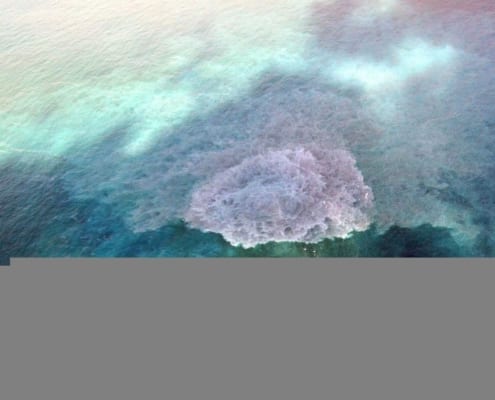 https://volcanofoundation.org/wp-content/uploads/2018/12/Vuelo-Científico-INVOLCAN-GC-El-Hierro-230112-550.jpg
795
1200
Anne Fornier
https://volcanofoundation.org/wp-content/uploads/2021/04/volcano-foundation-1-1.png
Anne Fornier2018-12-20 11:56:112022-01-19 17:14:13WHAT WE KNOW ABOUT UNDERSEA VOLCANOES
https://volcanofoundation.org/wp-content/uploads/2018/12/Vuelo-Científico-INVOLCAN-GC-El-Hierro-230112-550.jpg
795
1200
Anne Fornier
https://volcanofoundation.org/wp-content/uploads/2021/04/volcano-foundation-1-1.png
Anne Fornier2018-12-20 11:56:112022-01-19 17:14:13WHAT WE KNOW ABOUT UNDERSEA VOLCANOESSearch
VOLCANO ACTIVE FOUNDATION
VOLCANO ACTIVE FOUNDATION RESPONSABILITY
nº 2195 authorised by the Madrid's Minister of Justice
NIF G67314625
SF Abocados Francesc Macia 7 pl17
08029 Barcelona, Spain

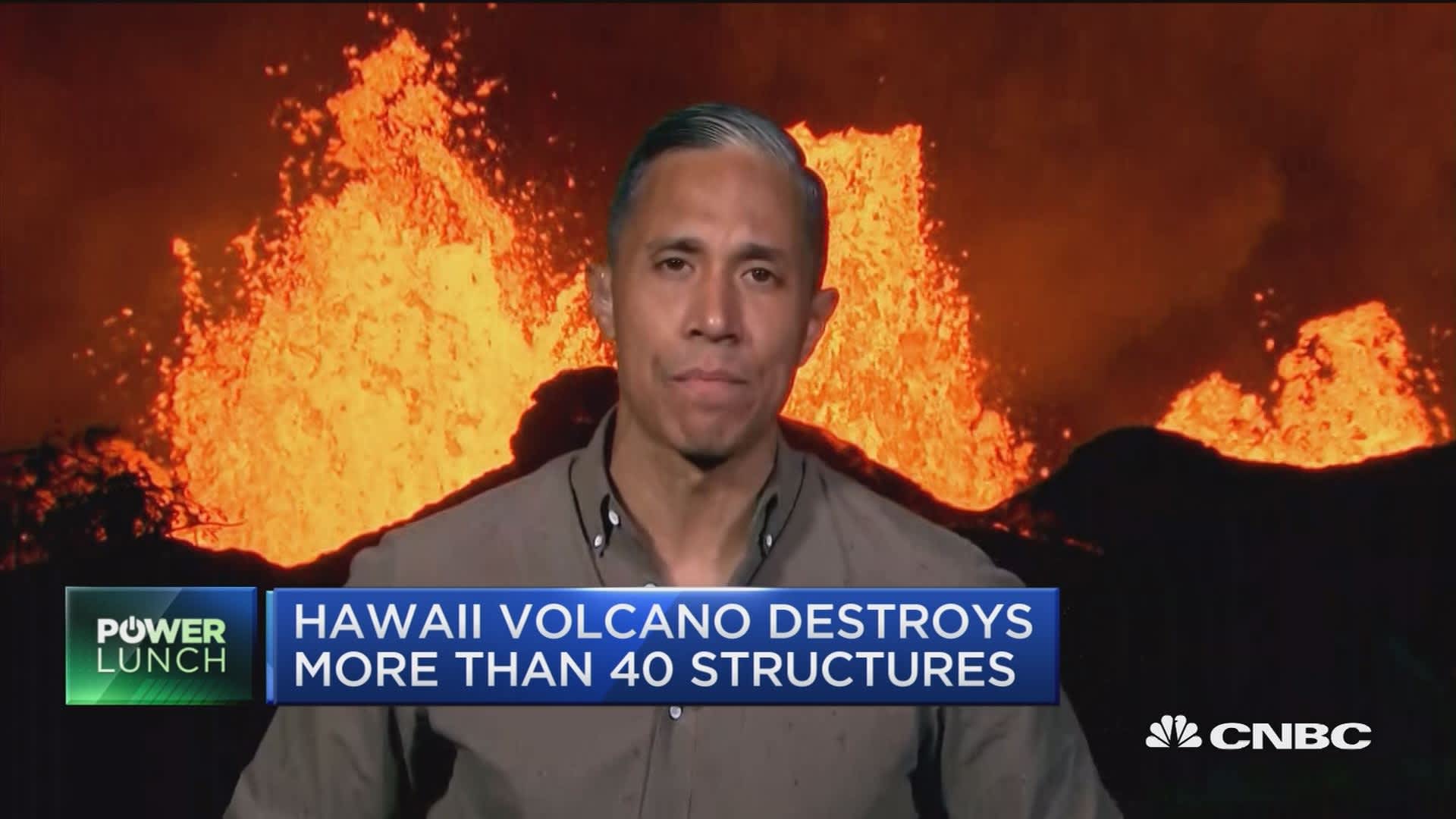


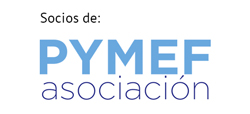
 Entreprendre.fr
Entreprendre.fr